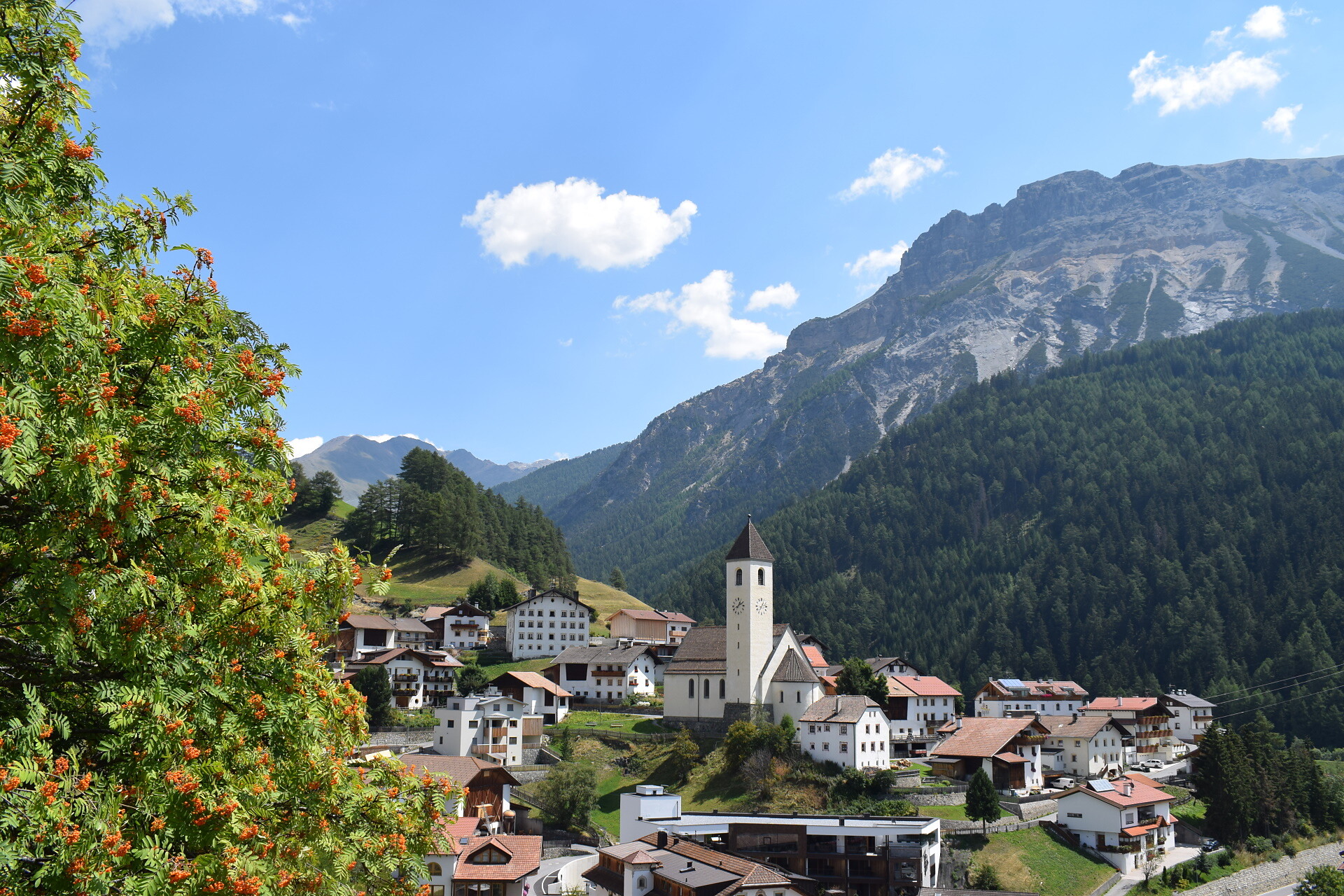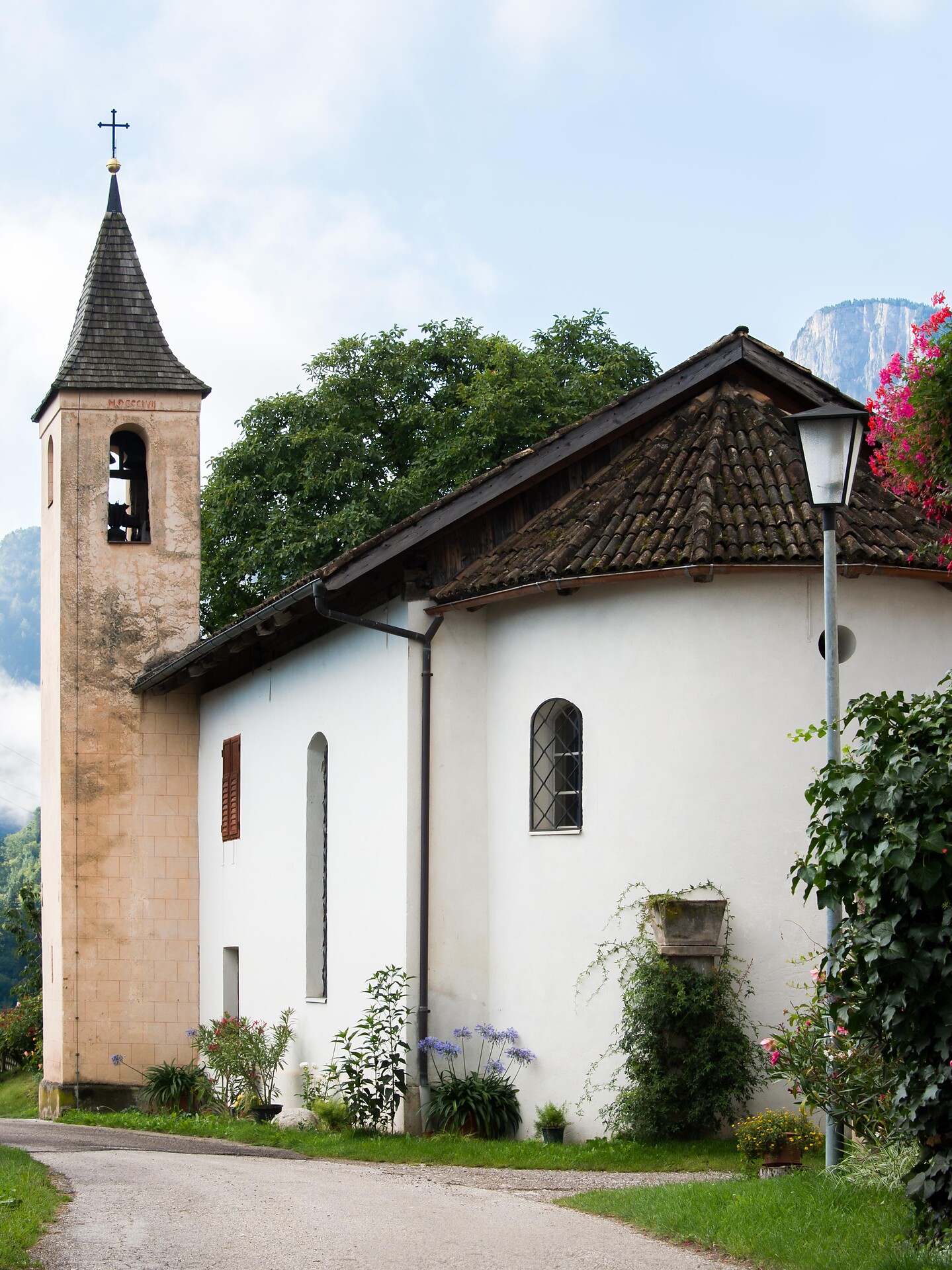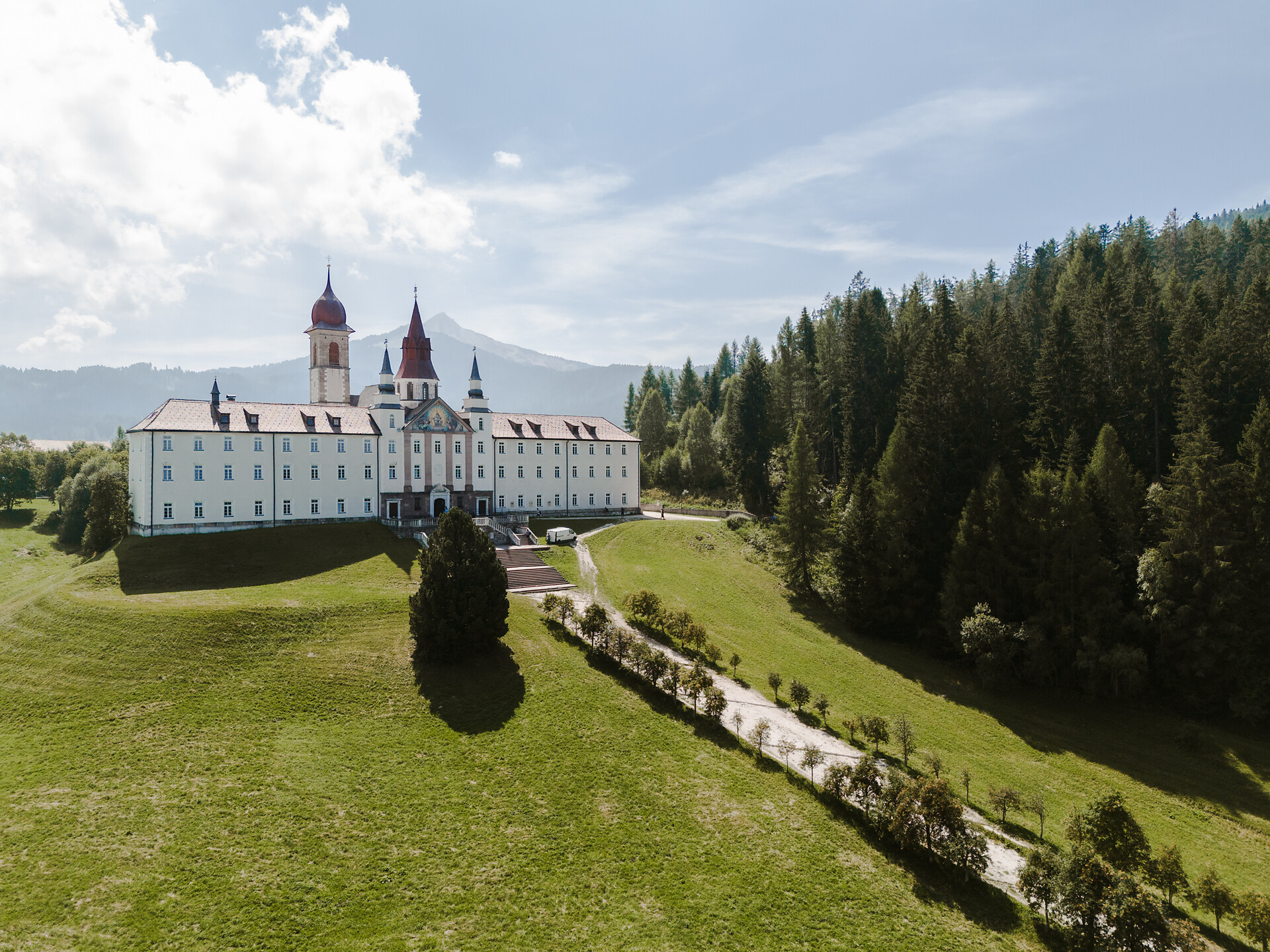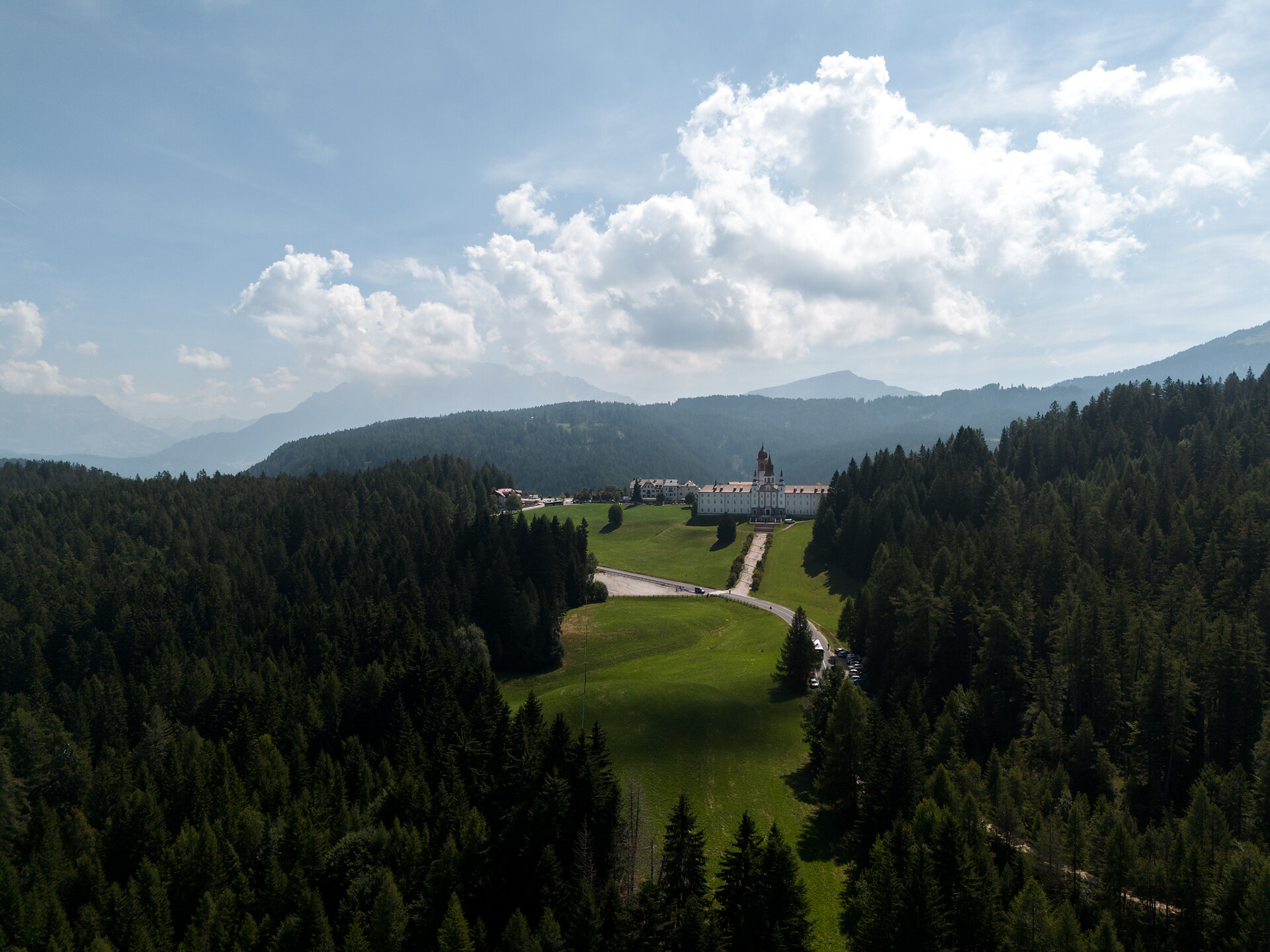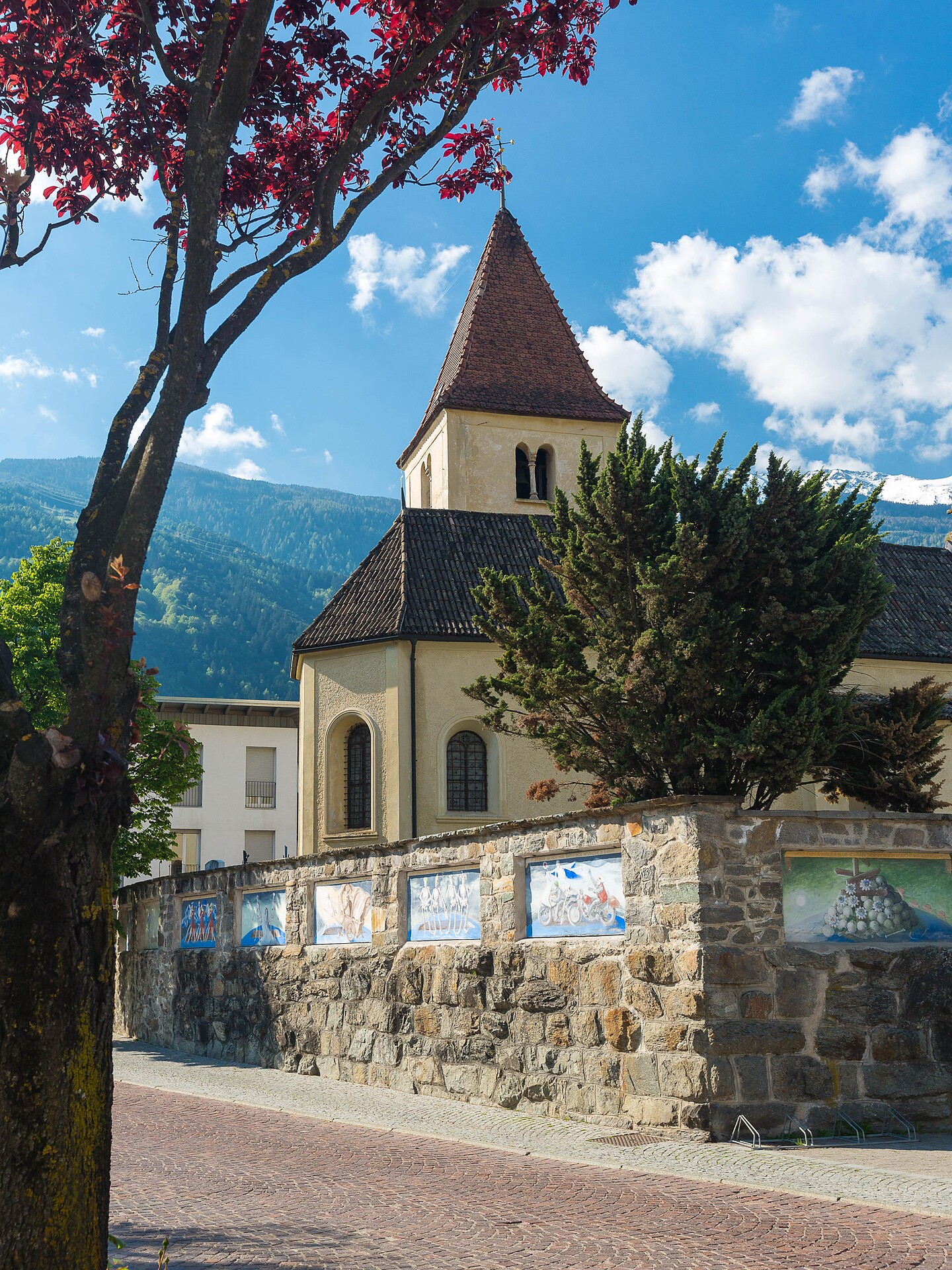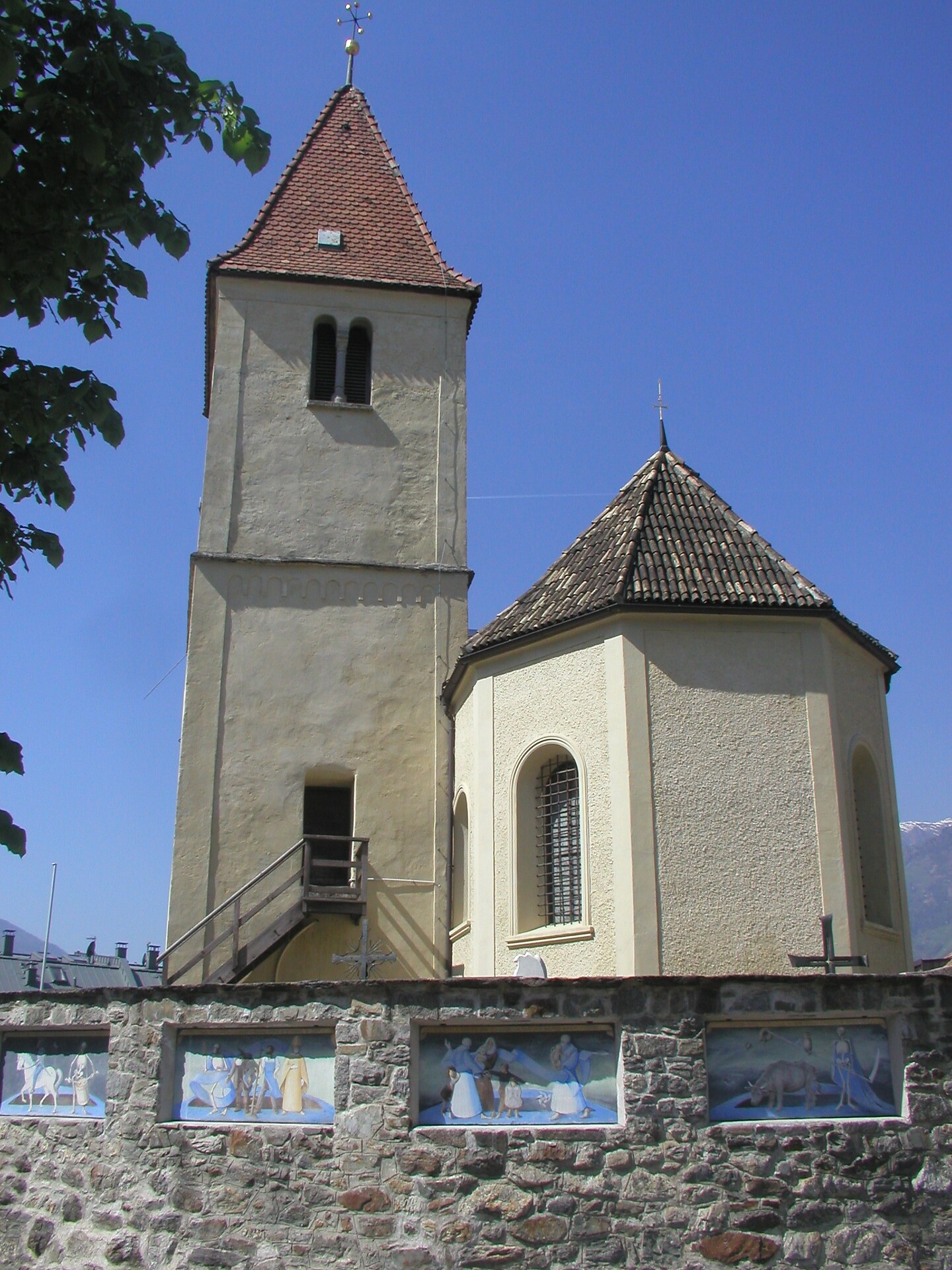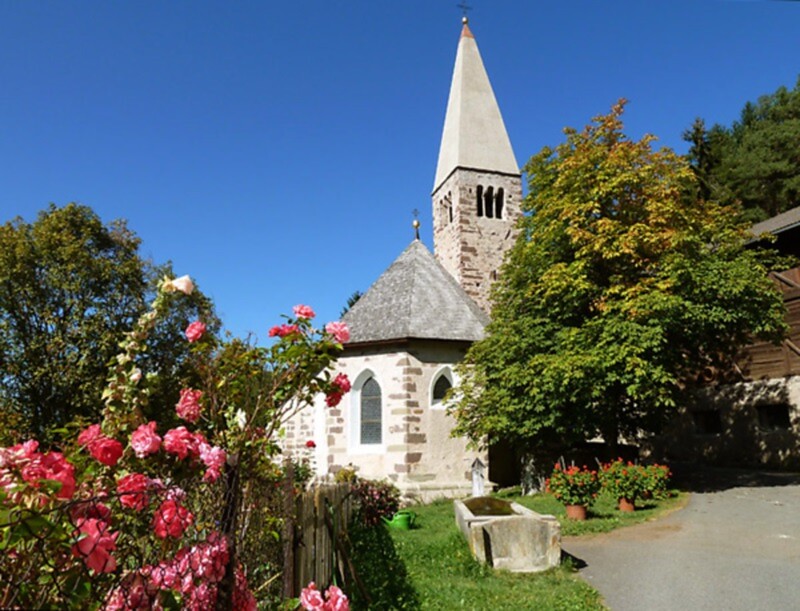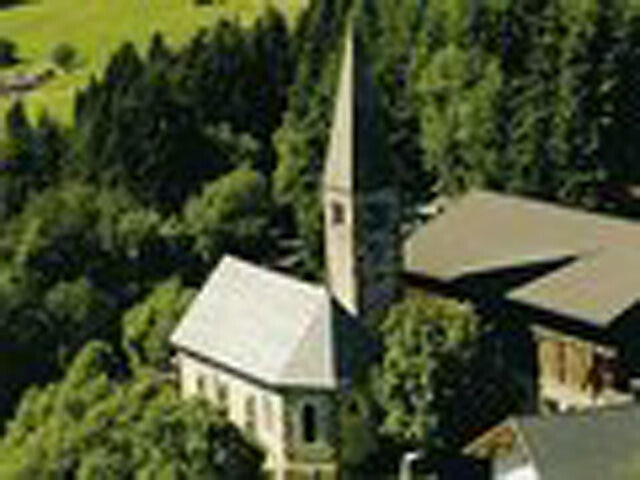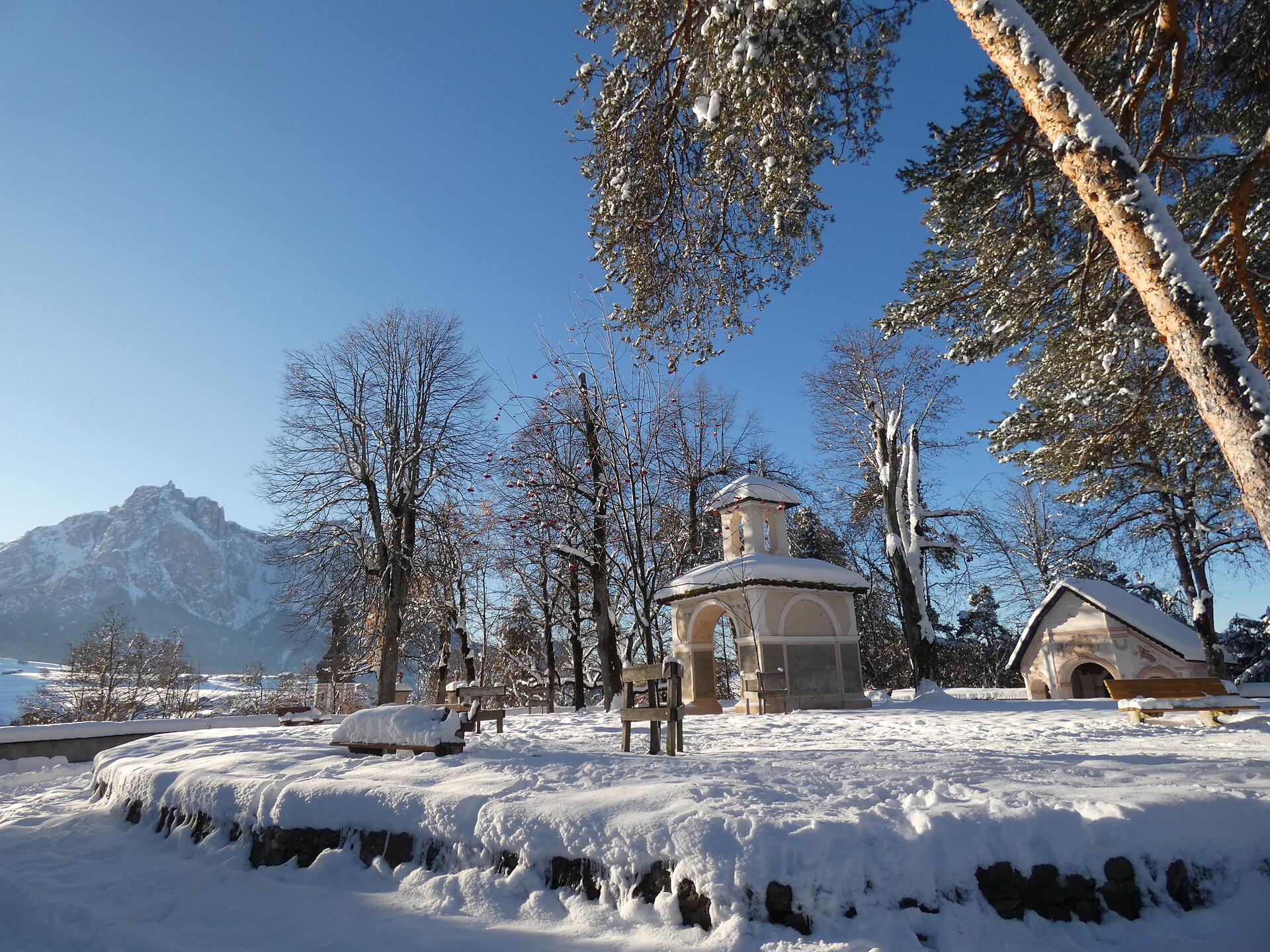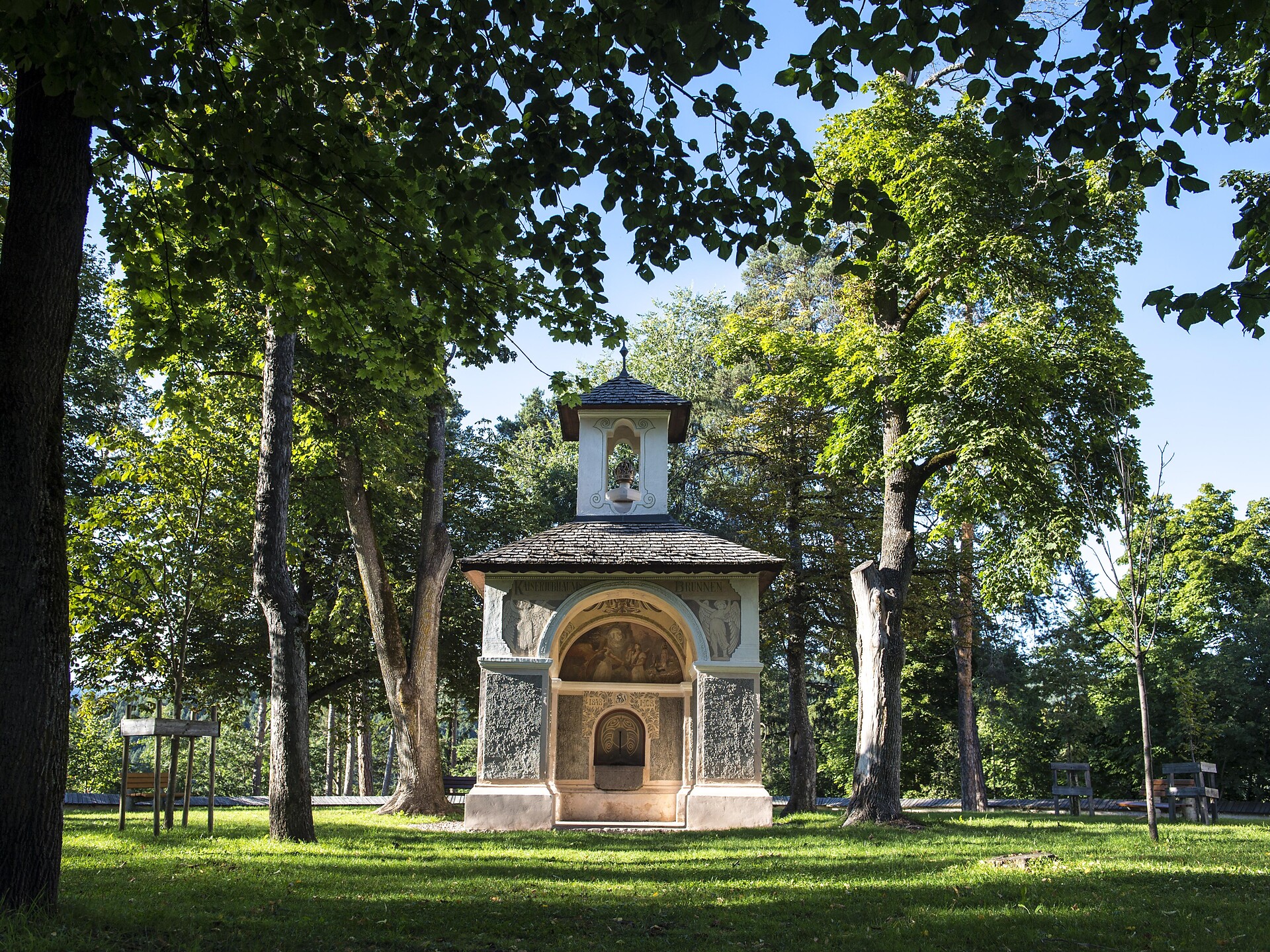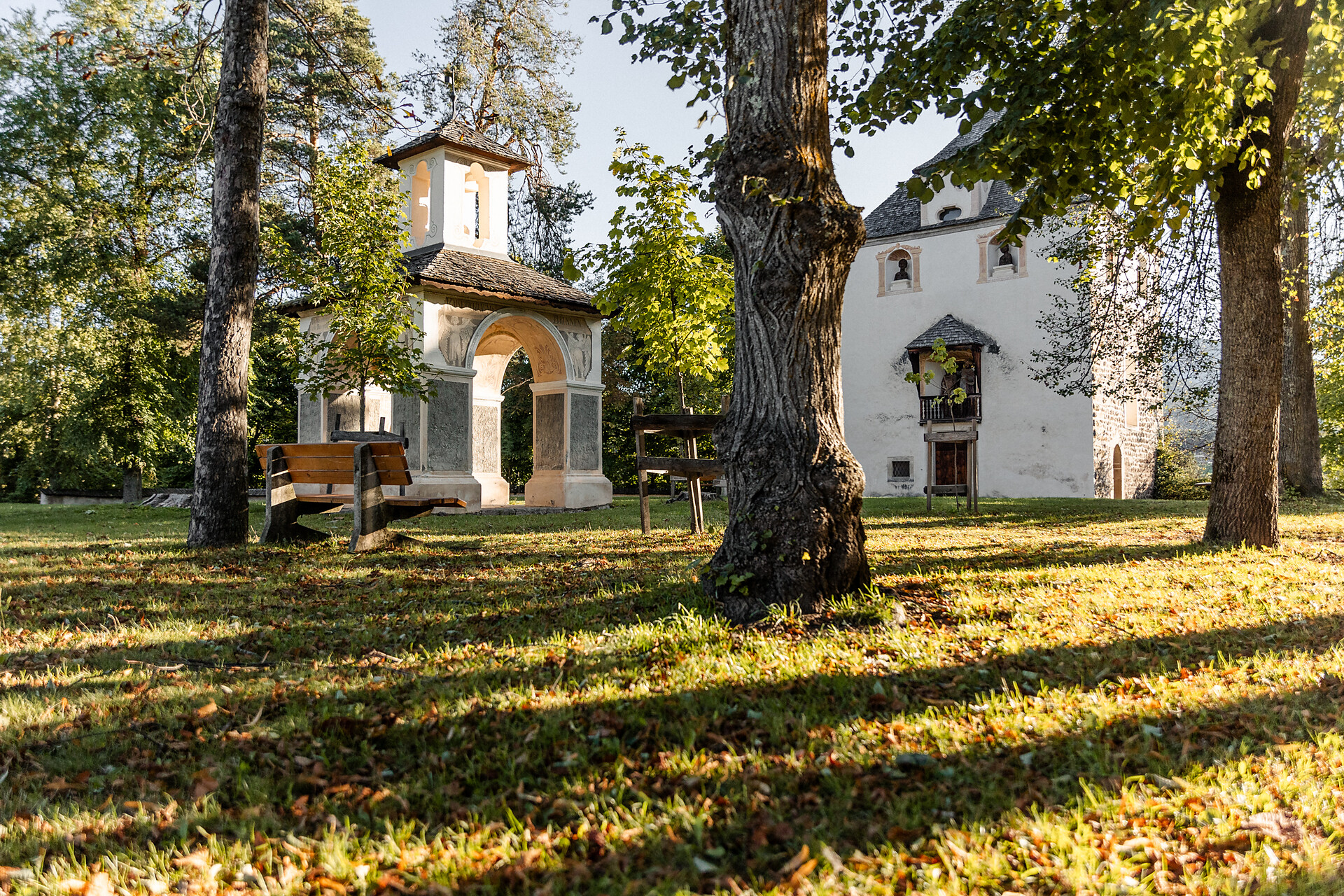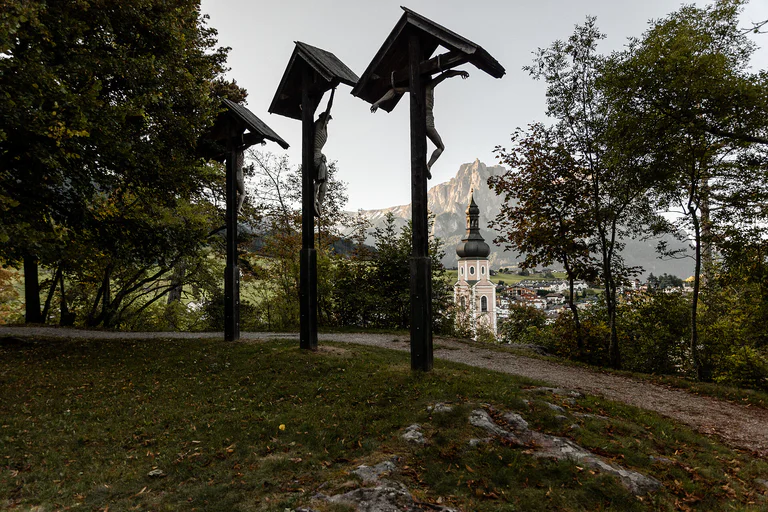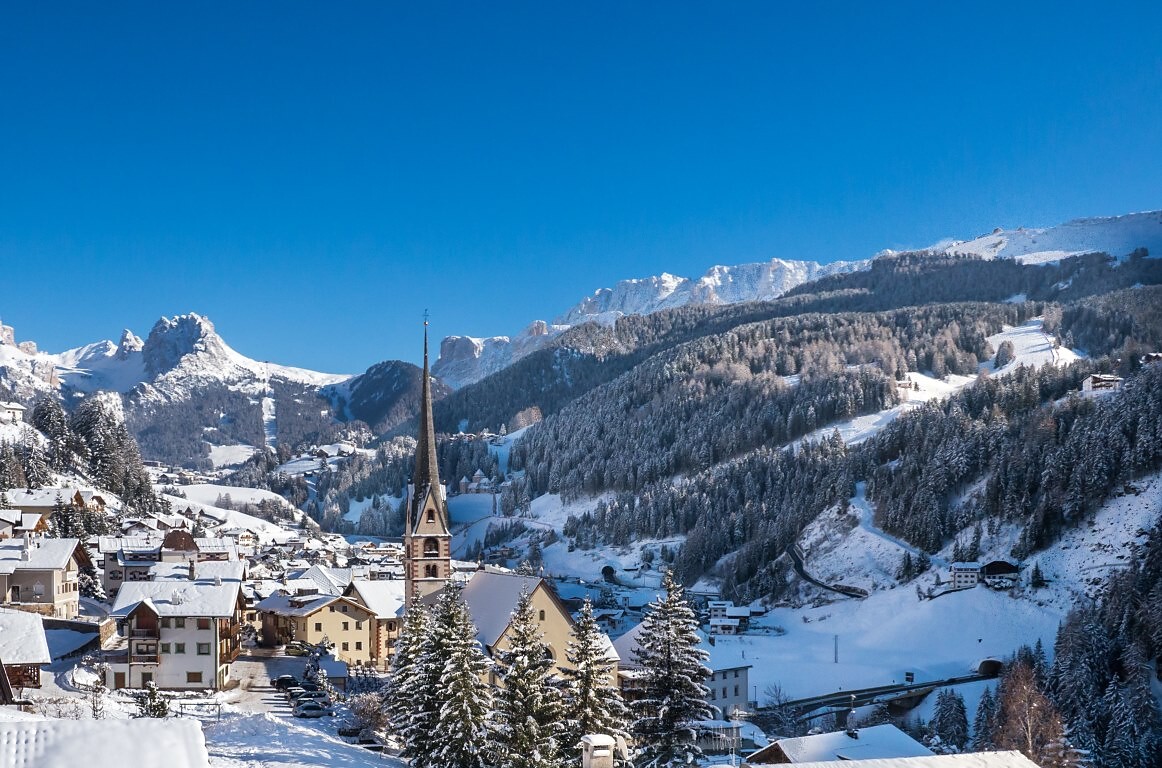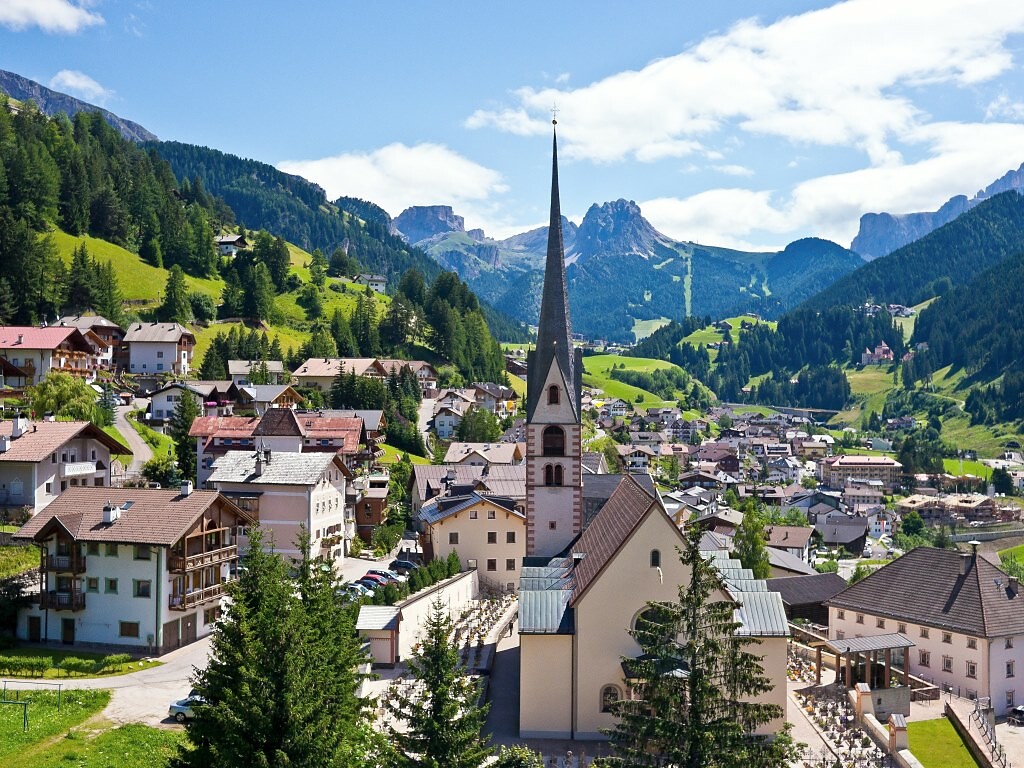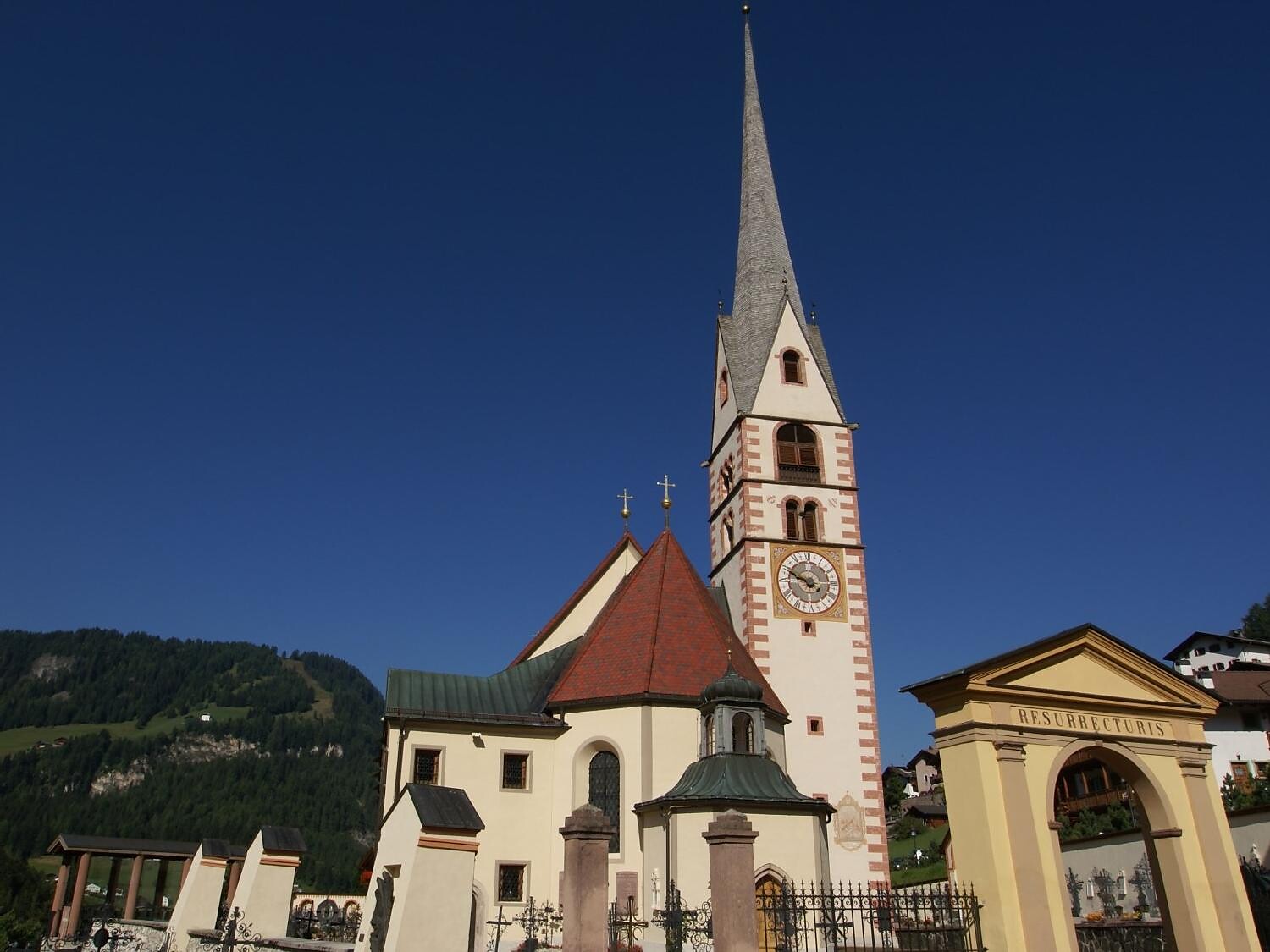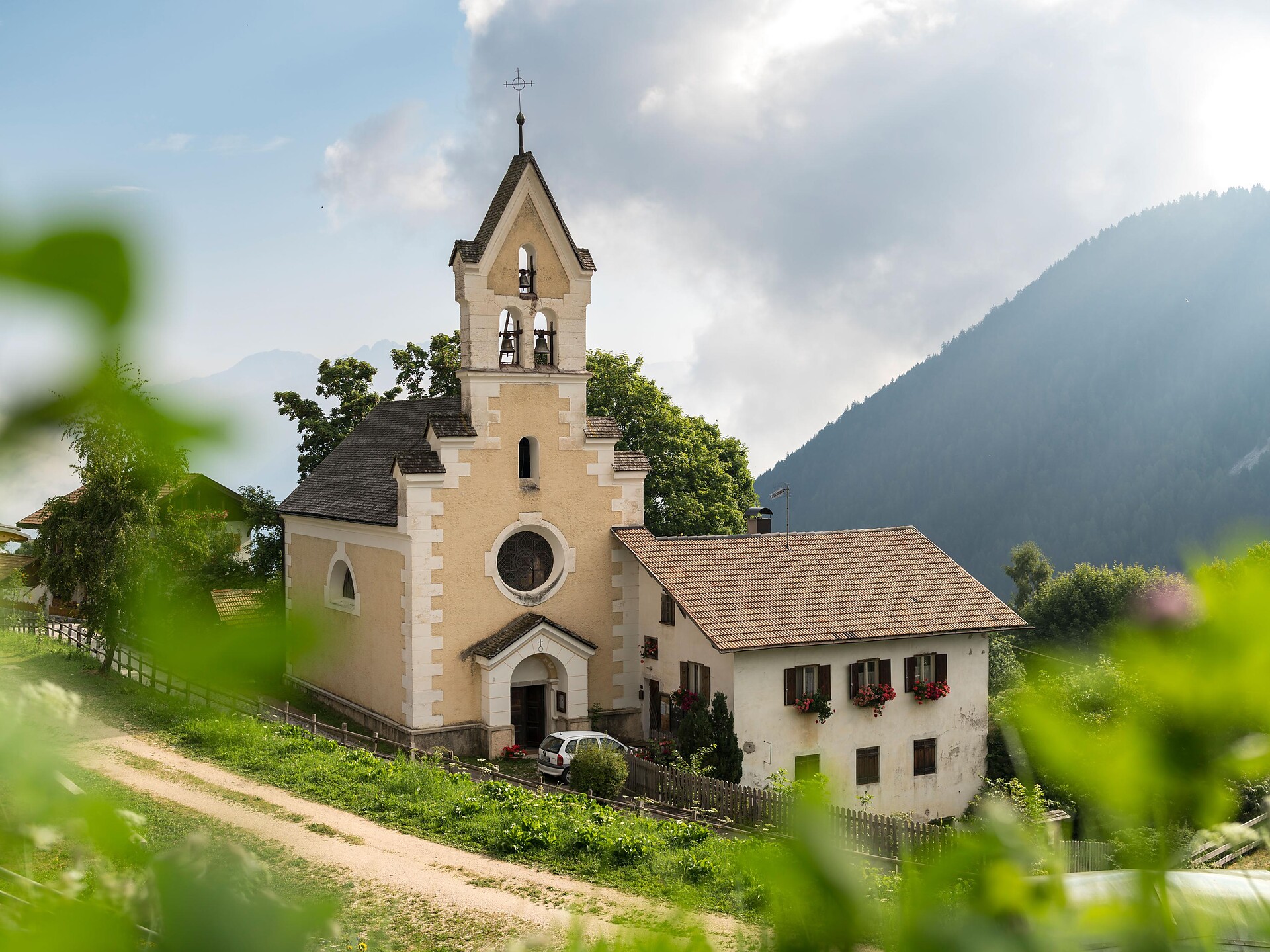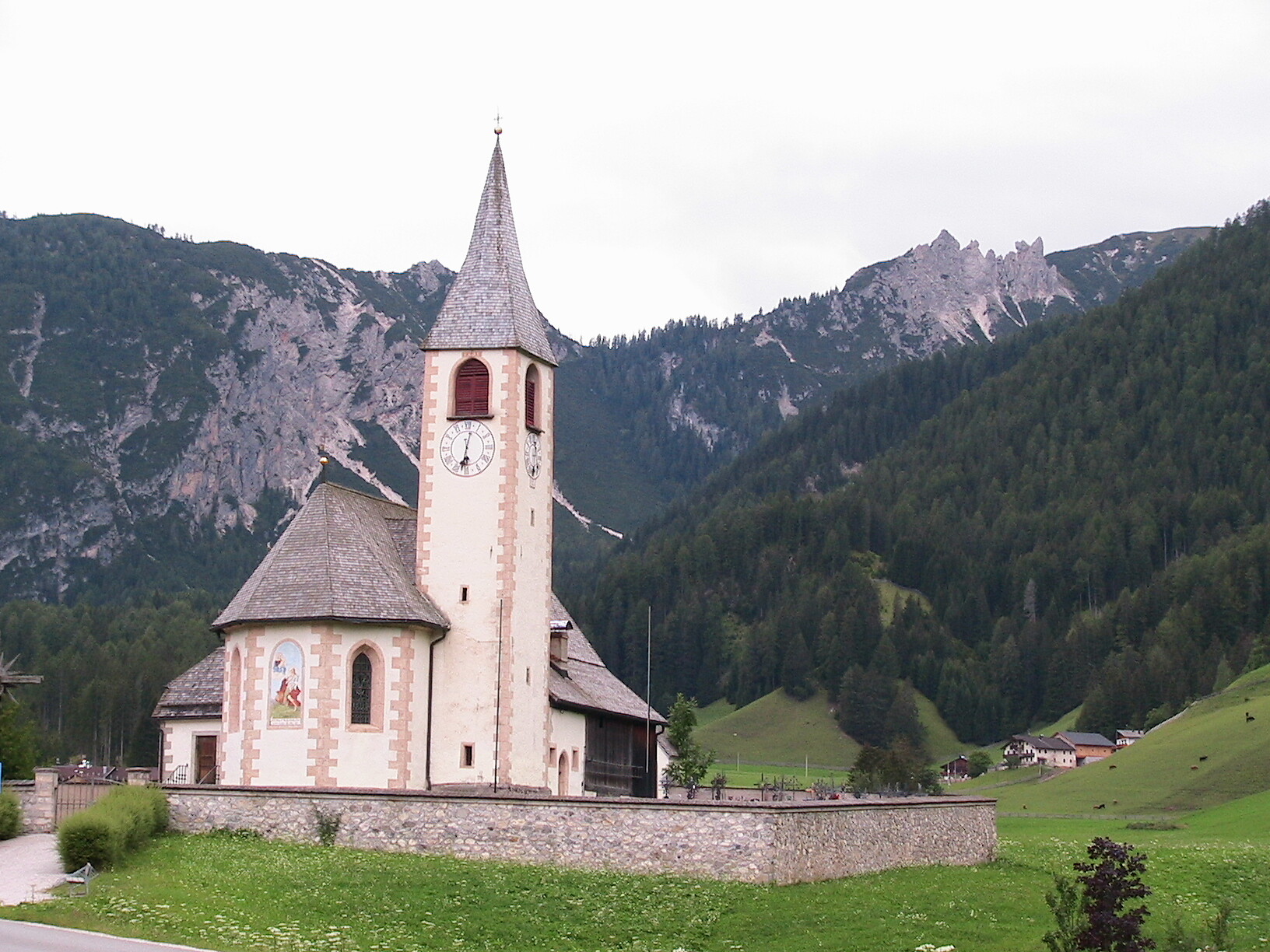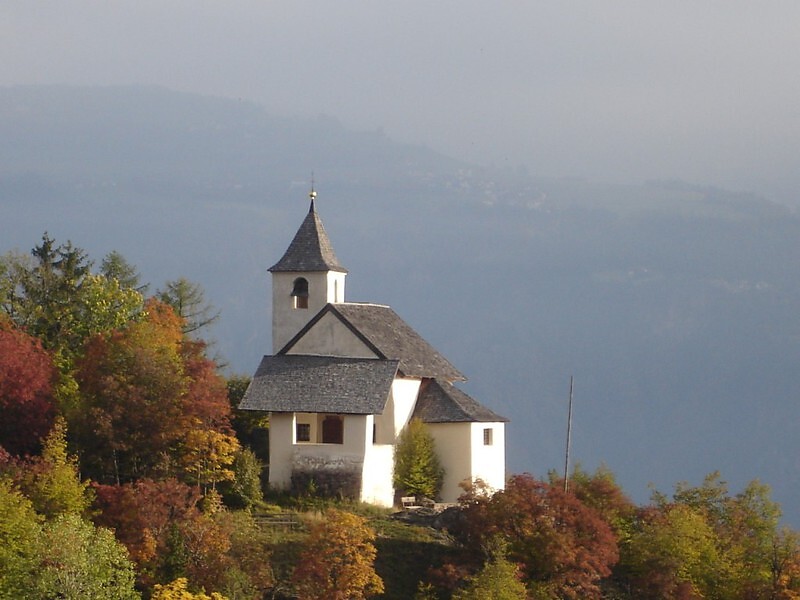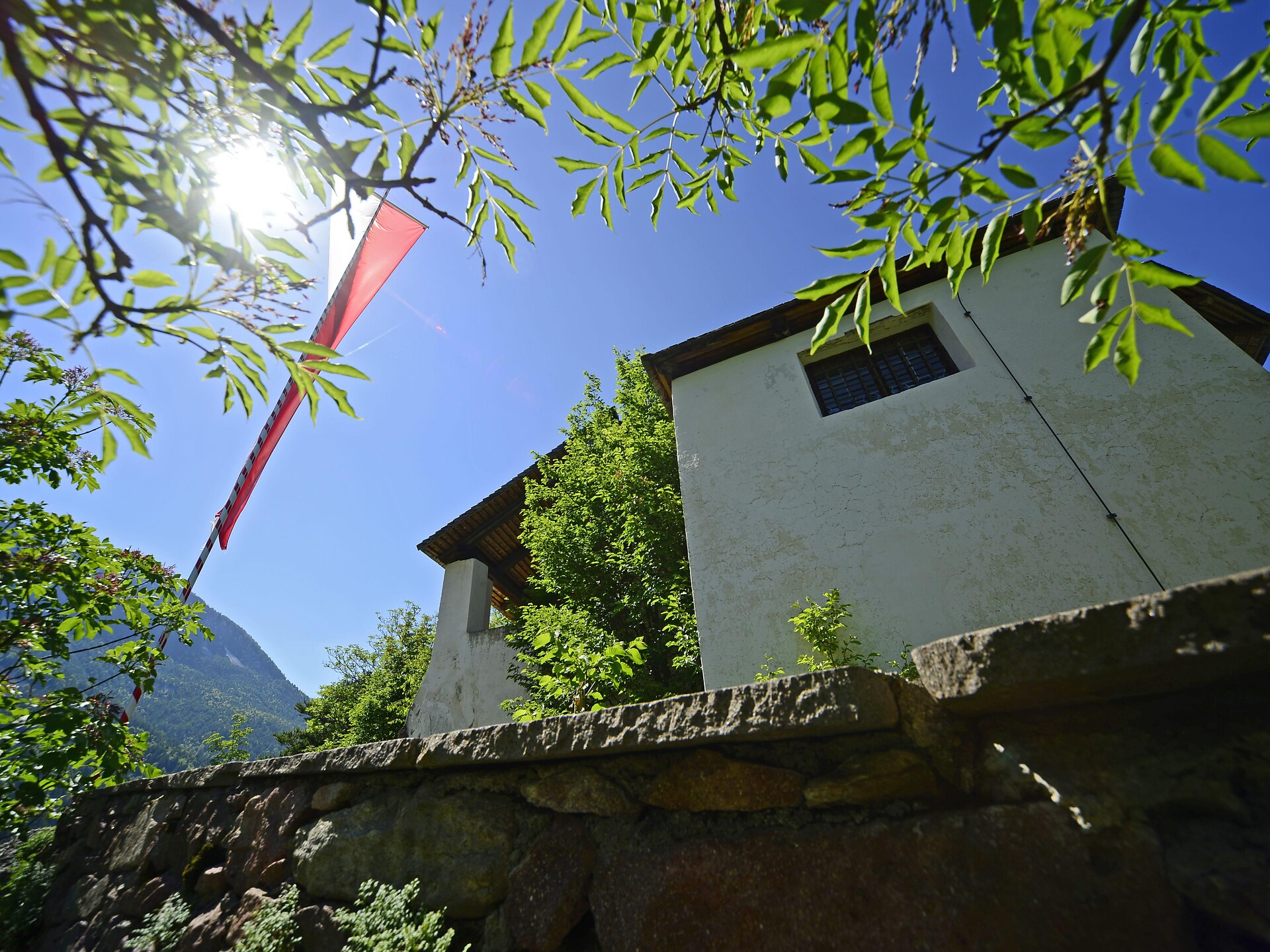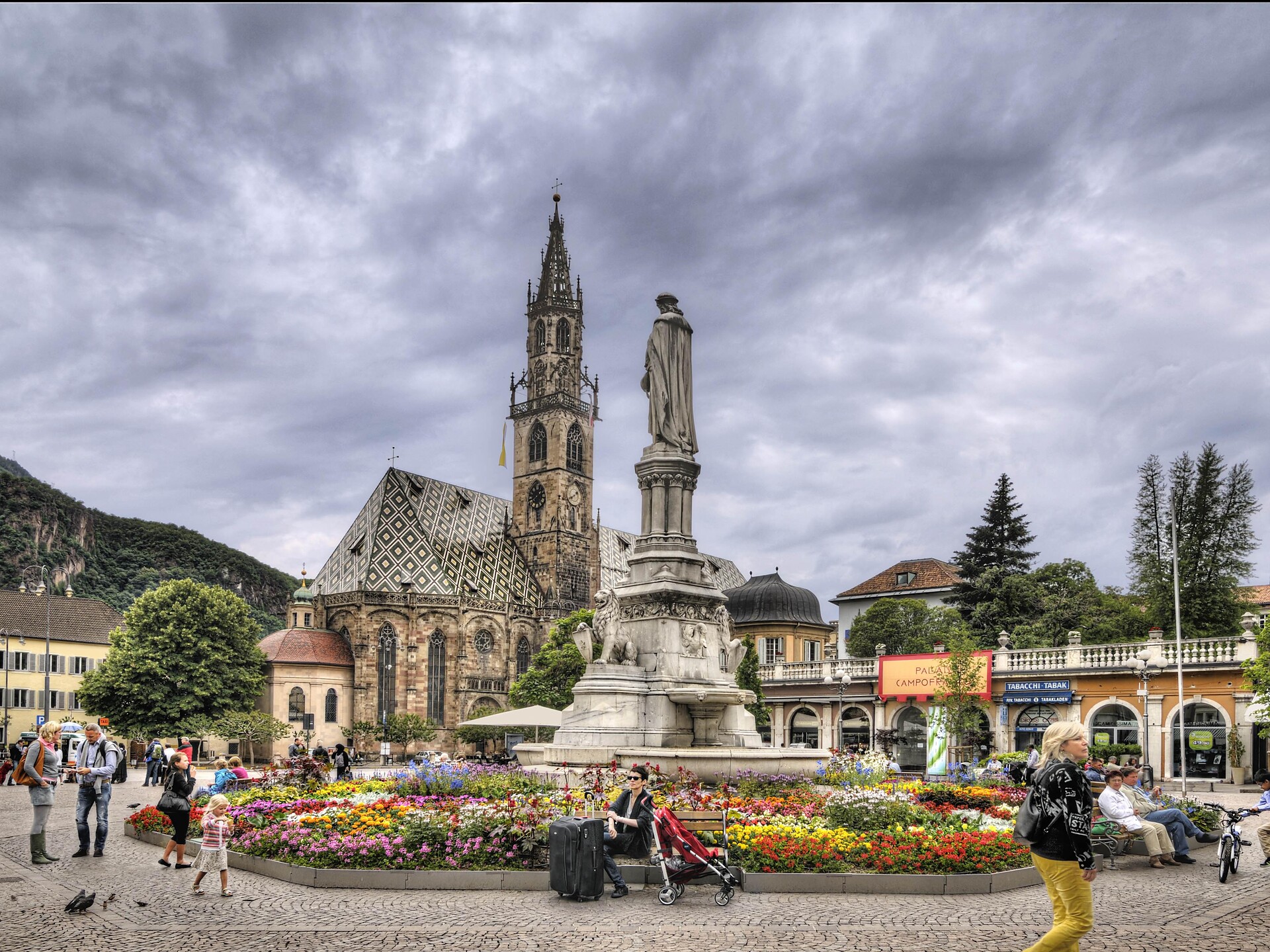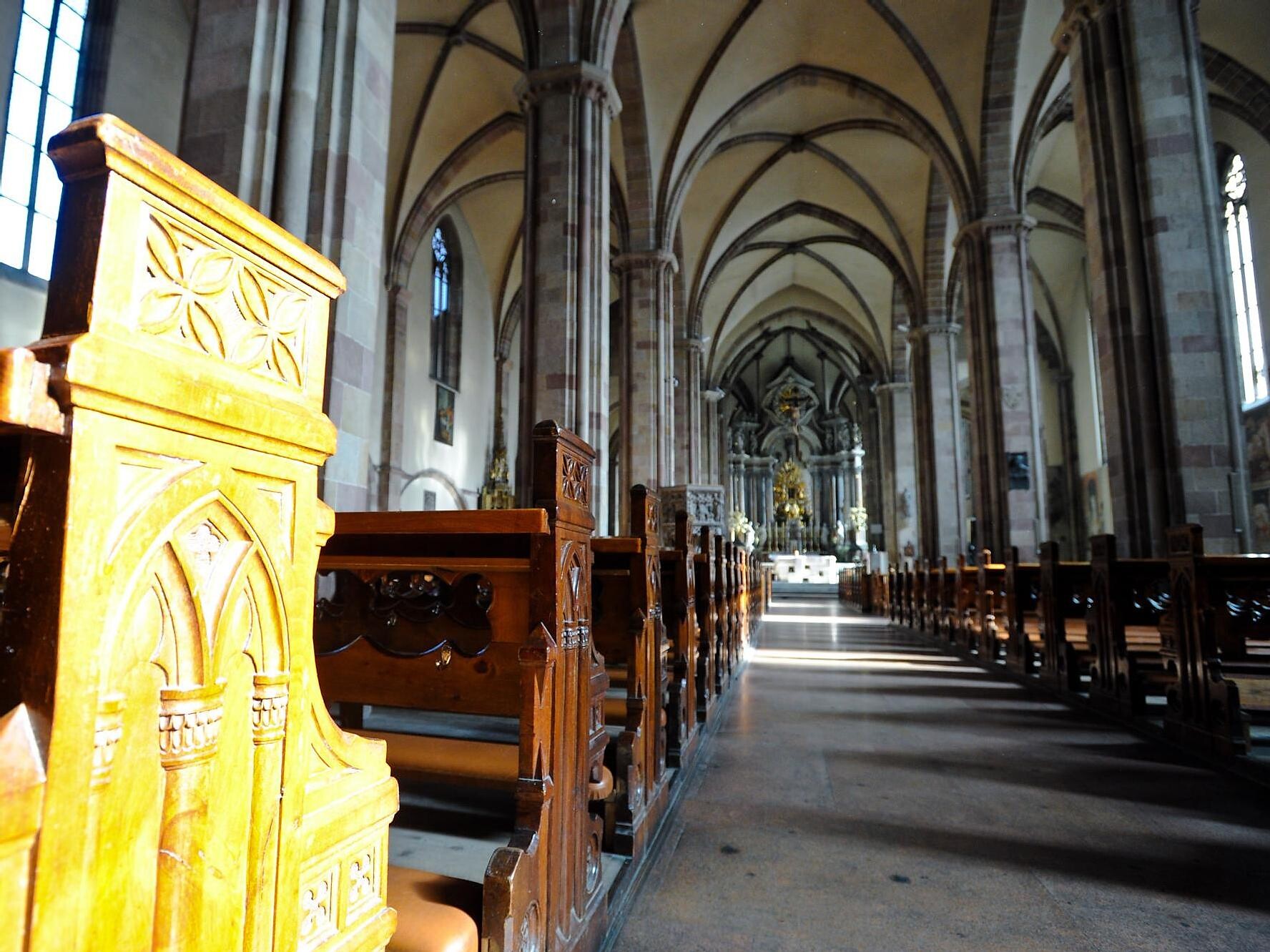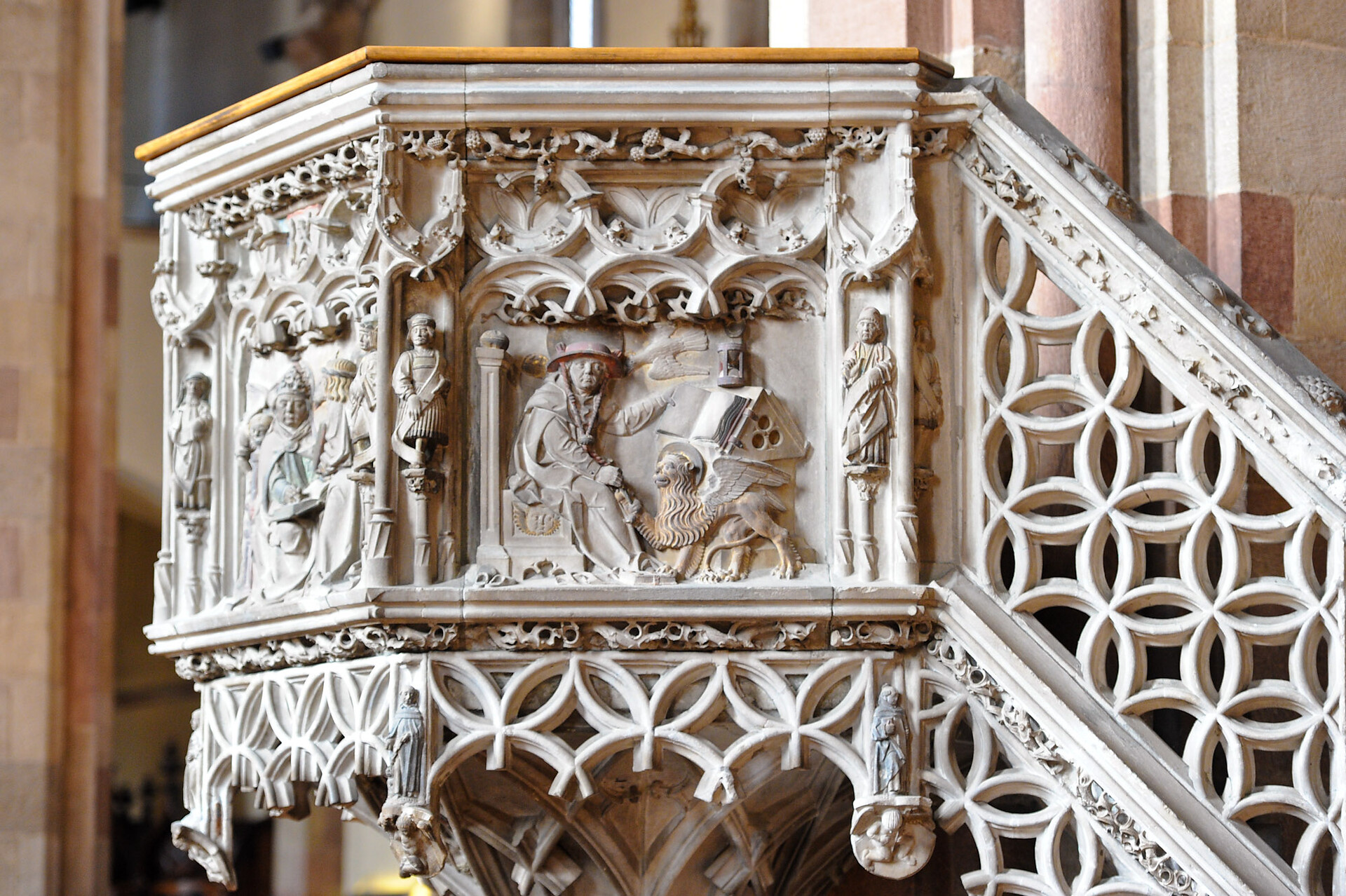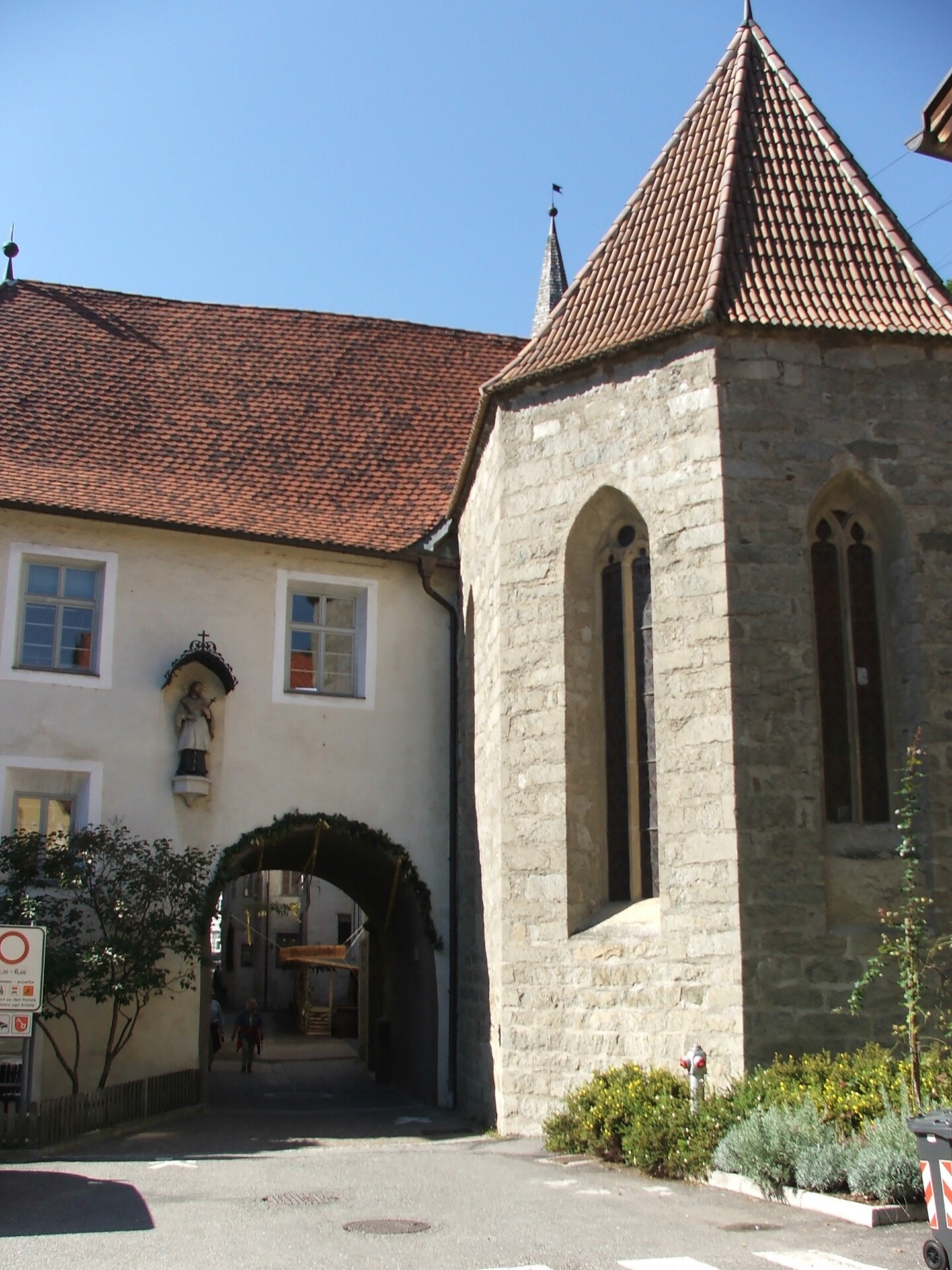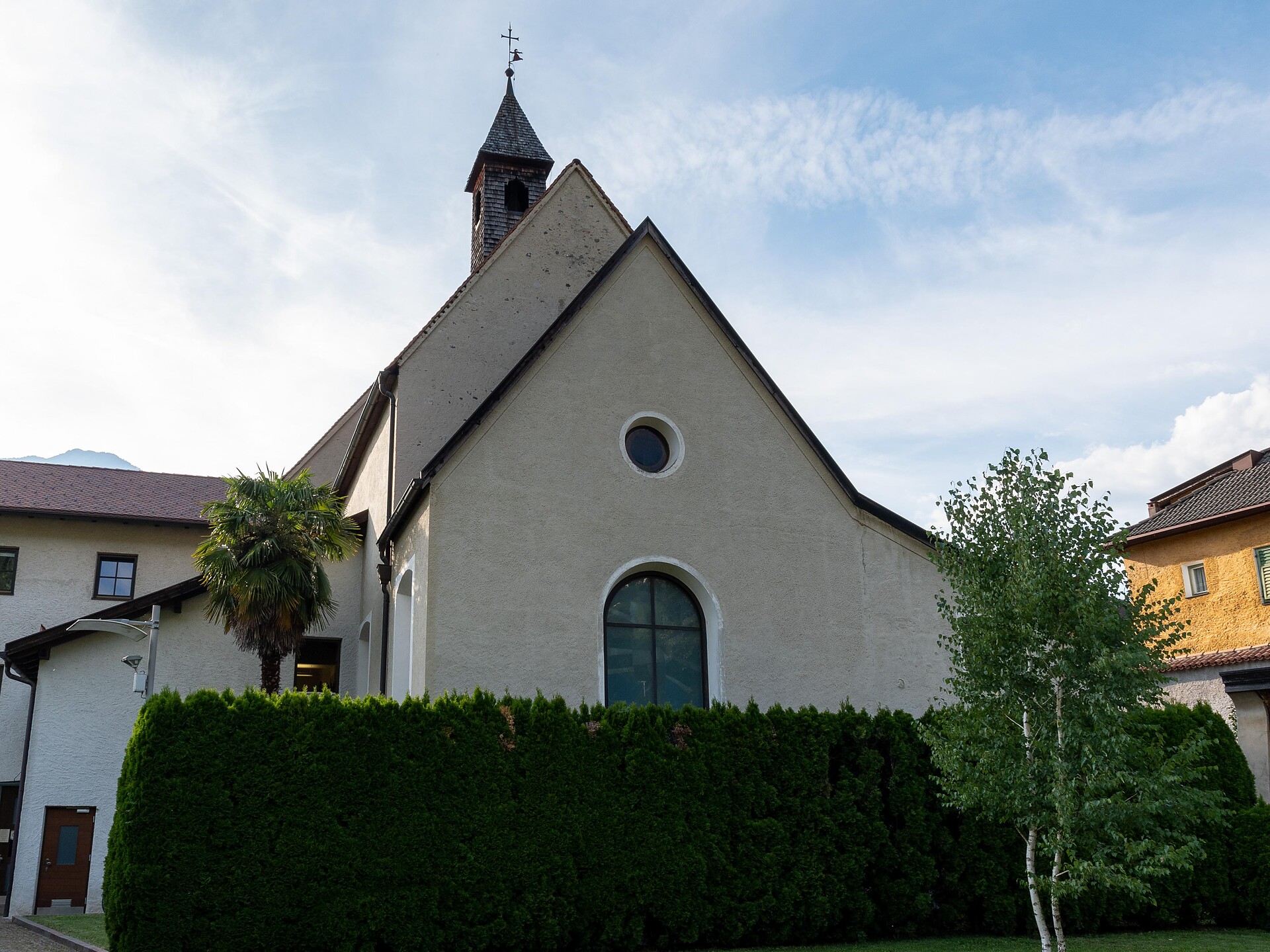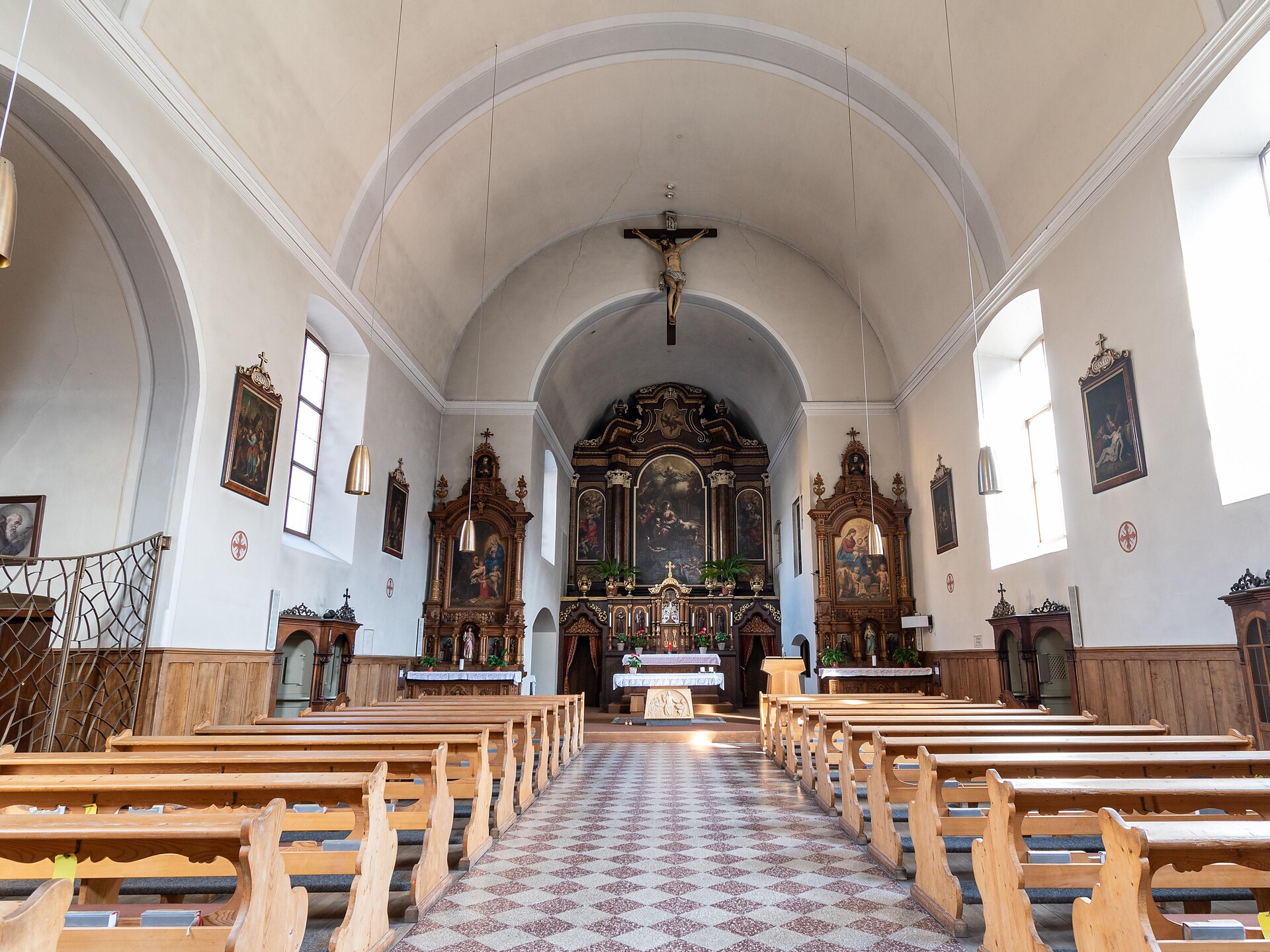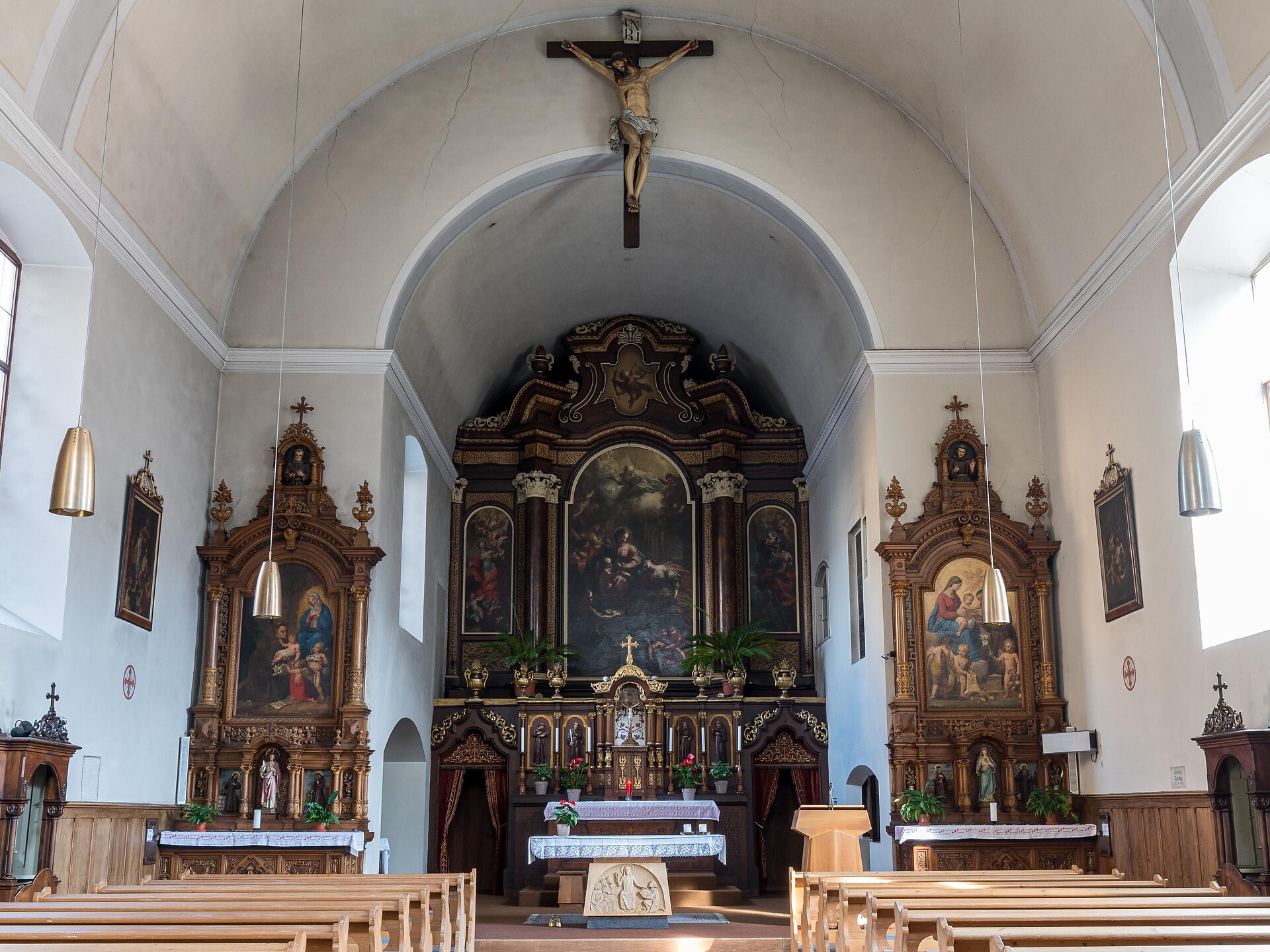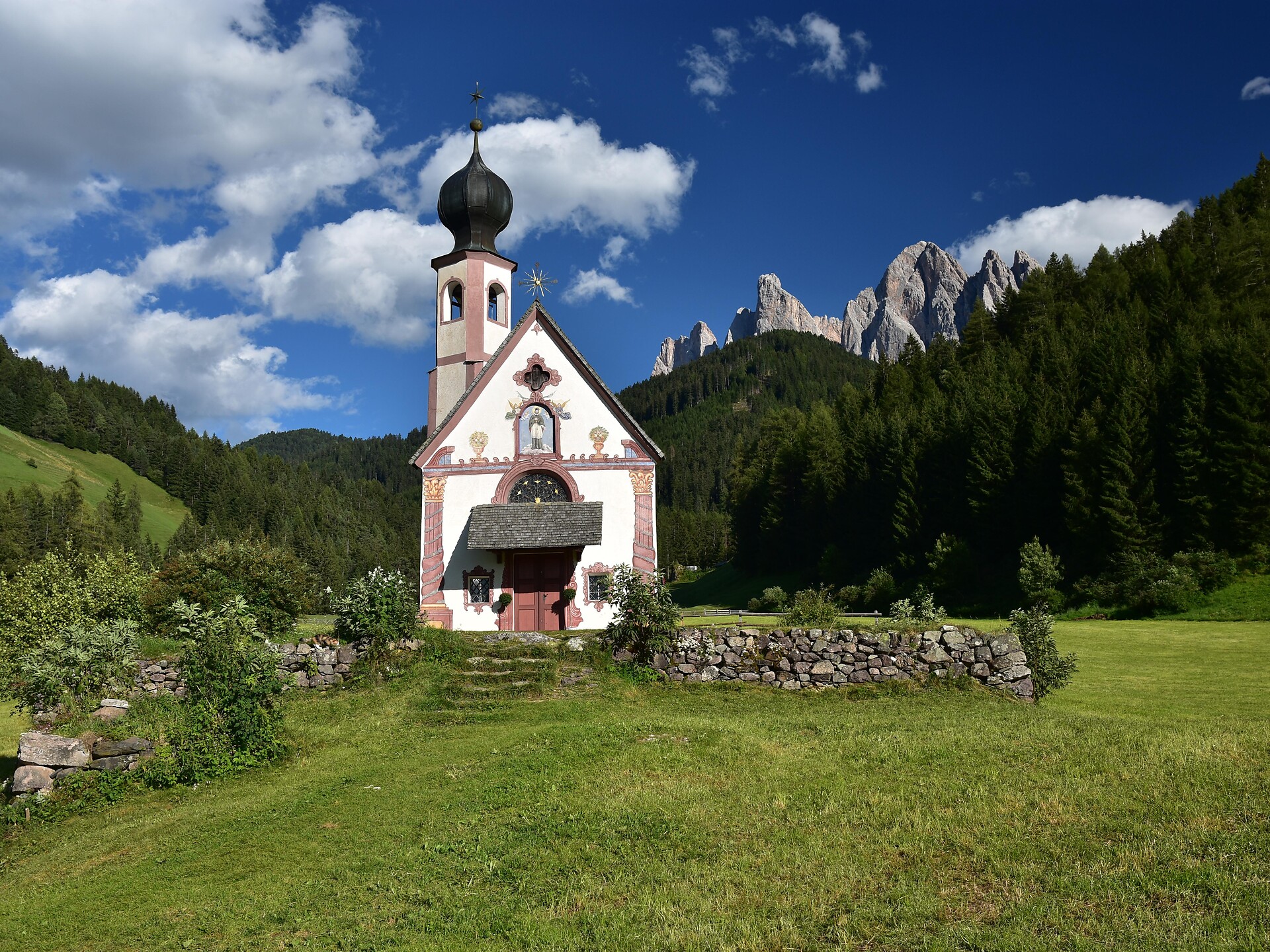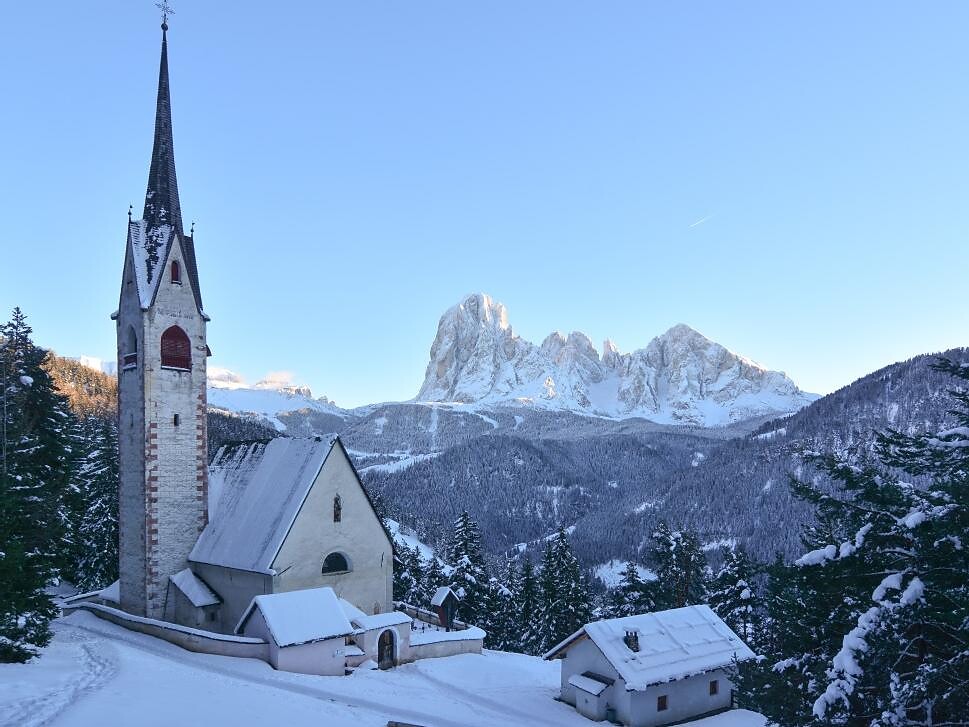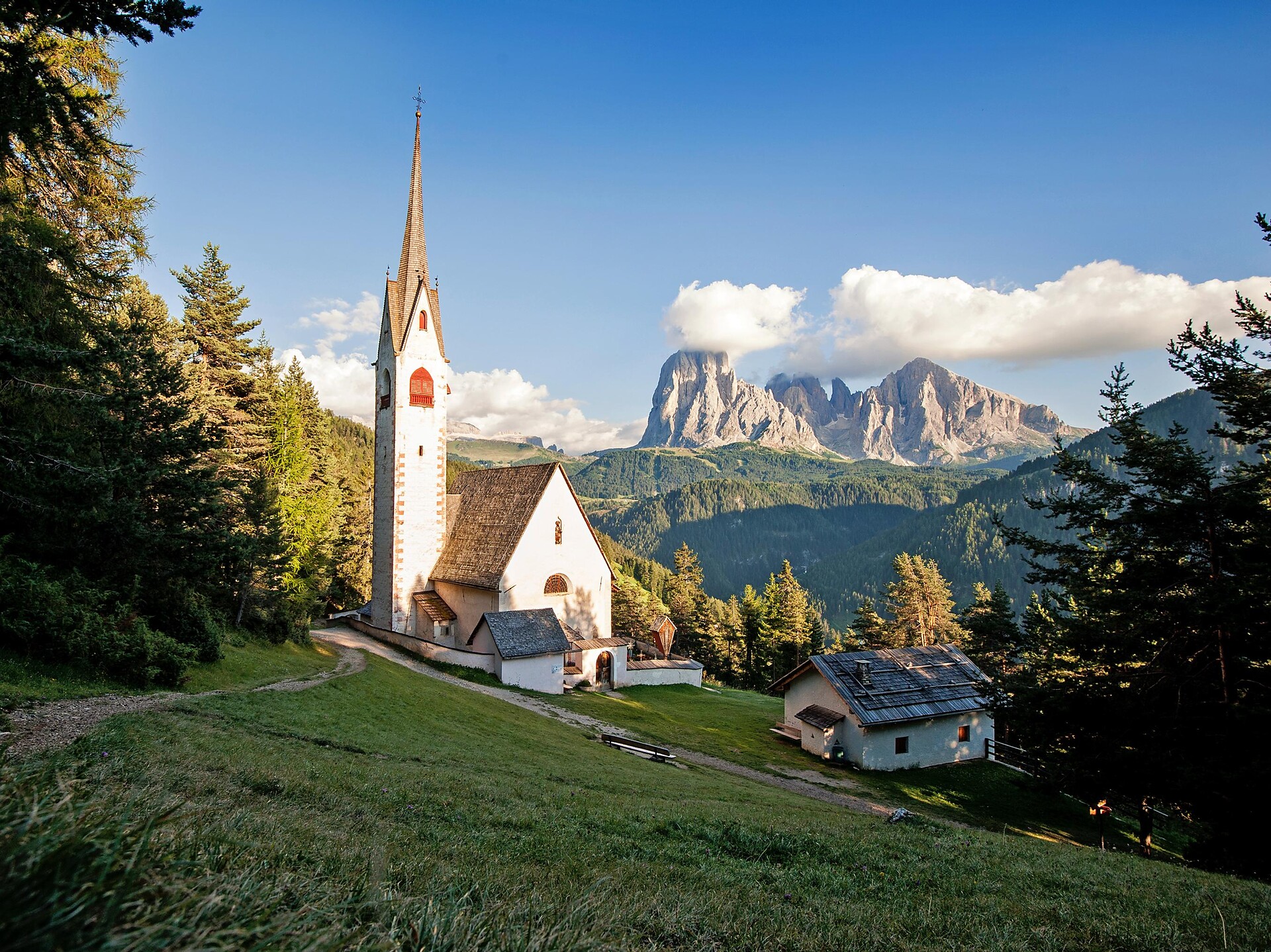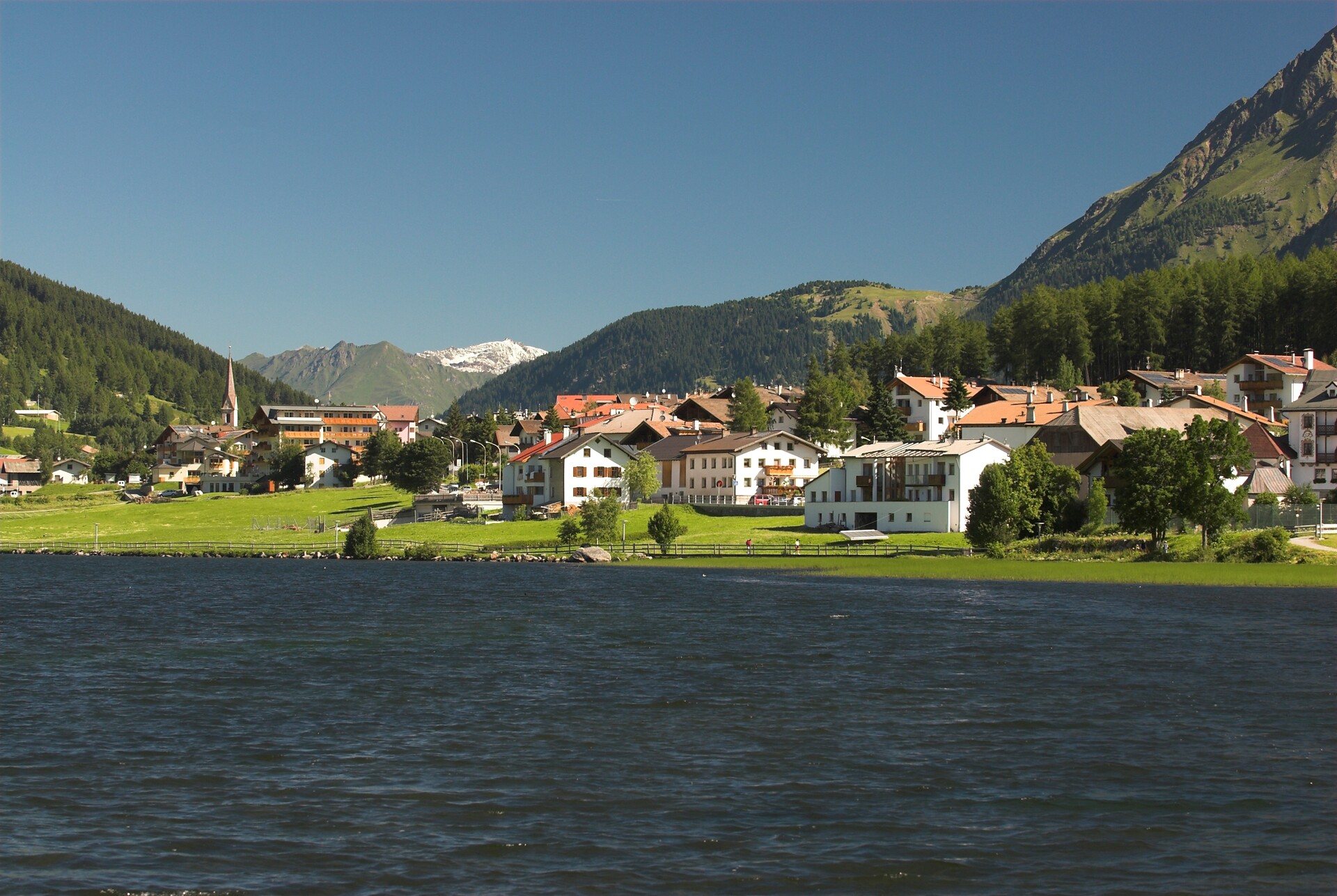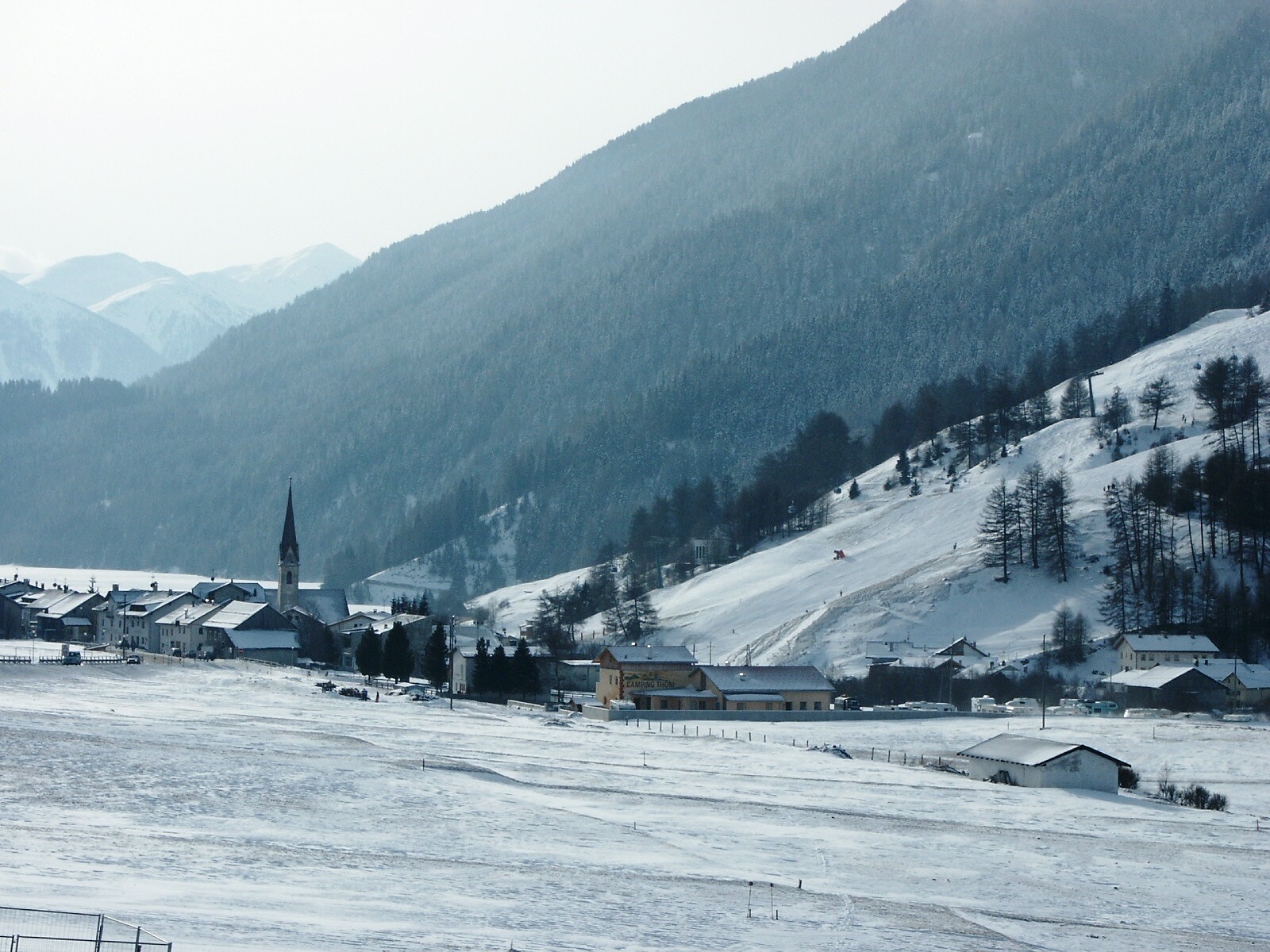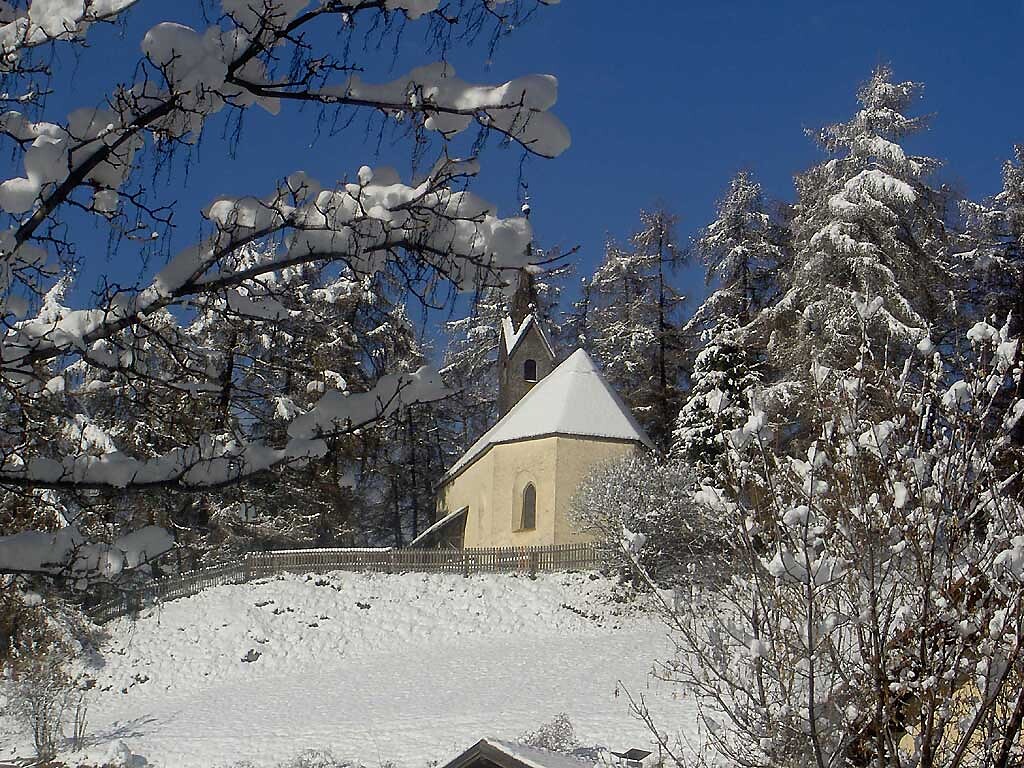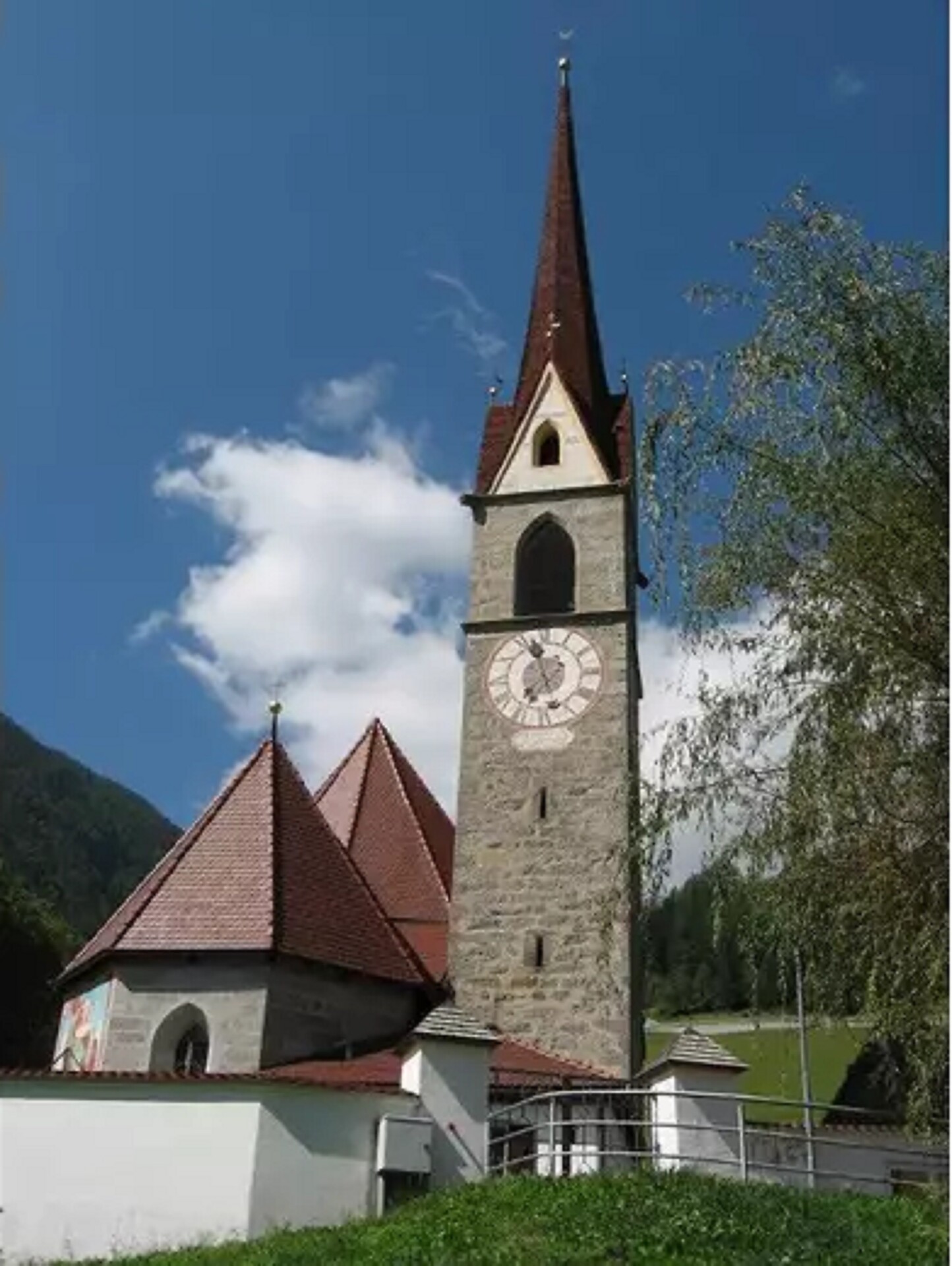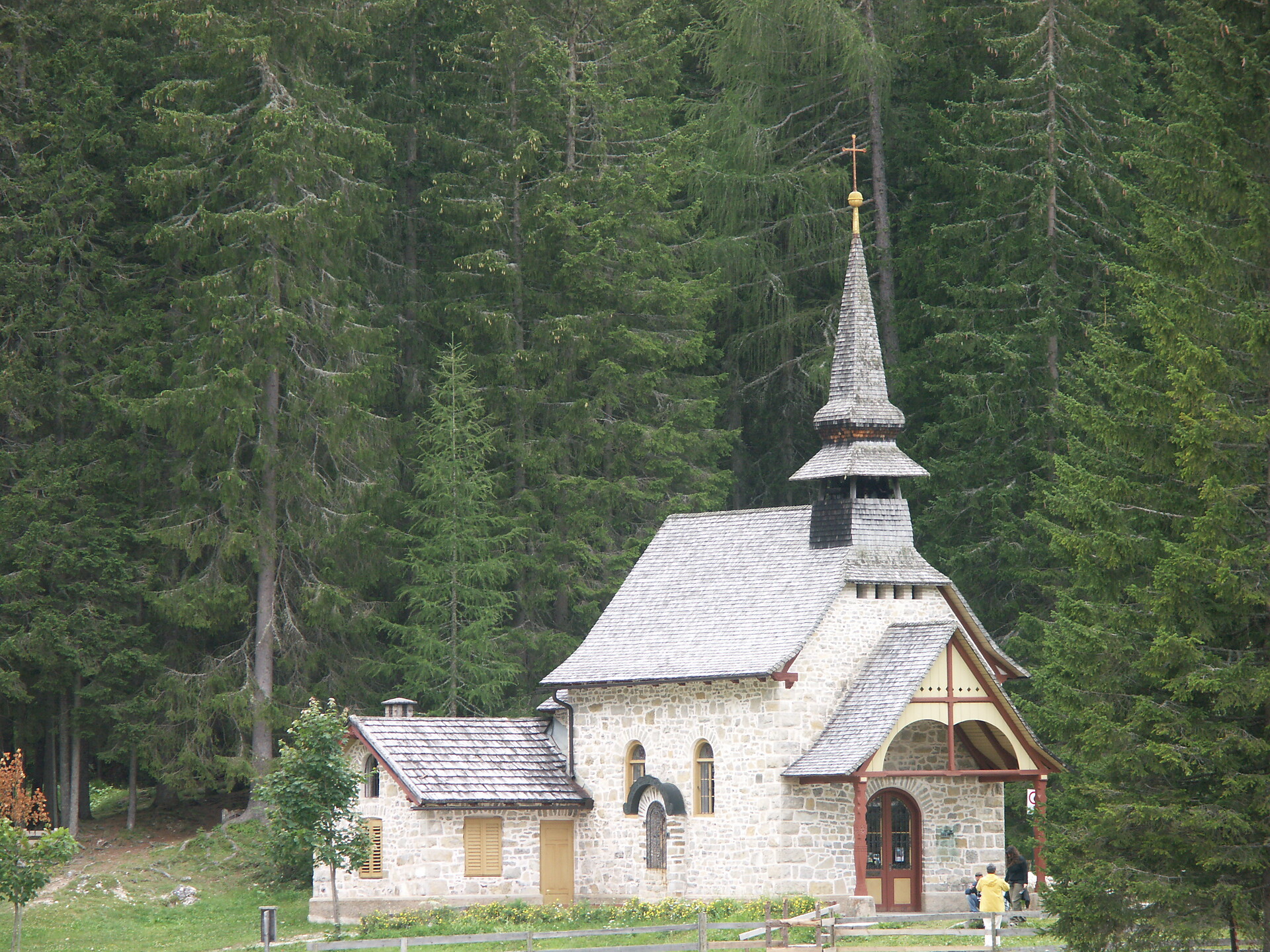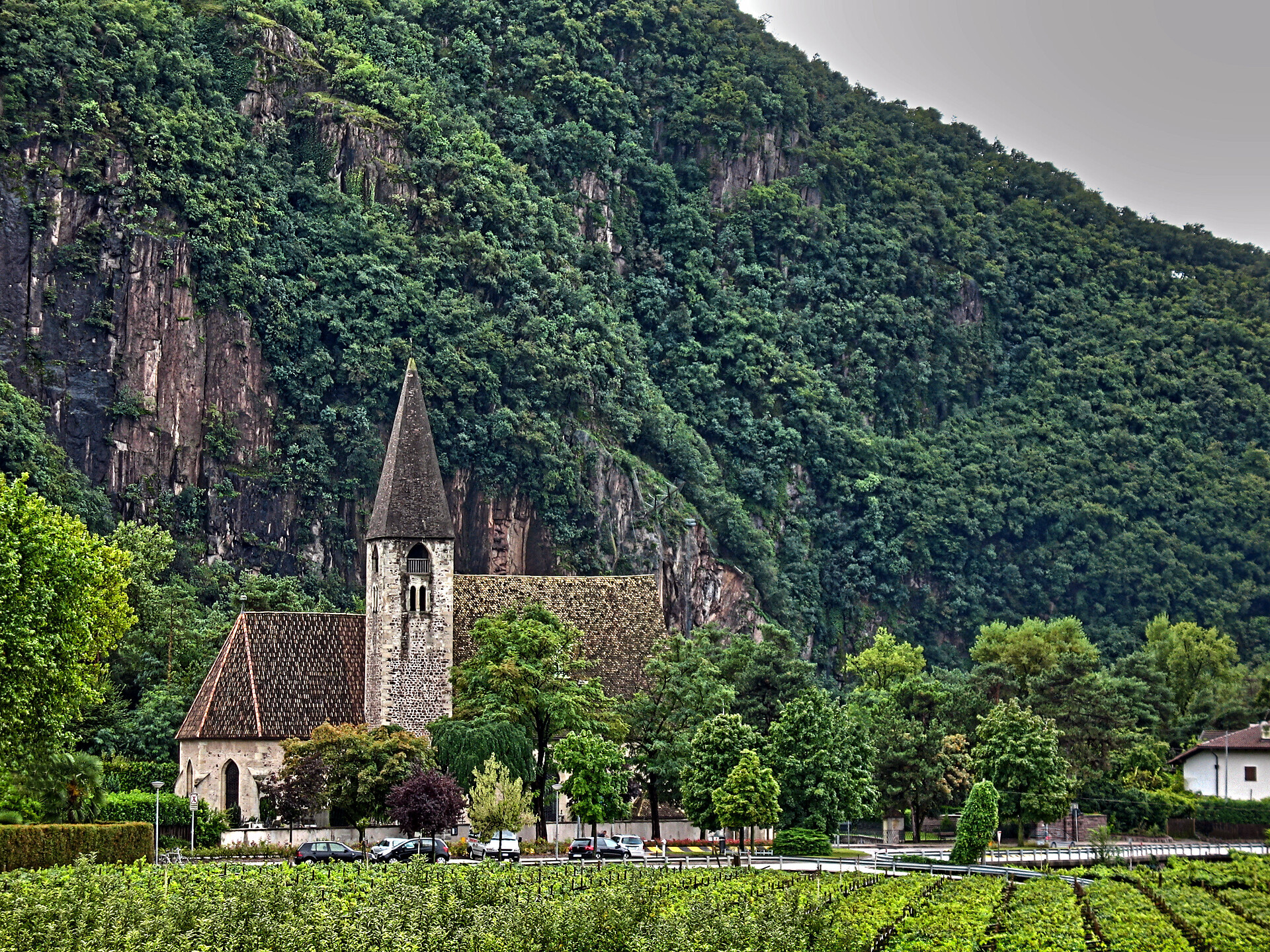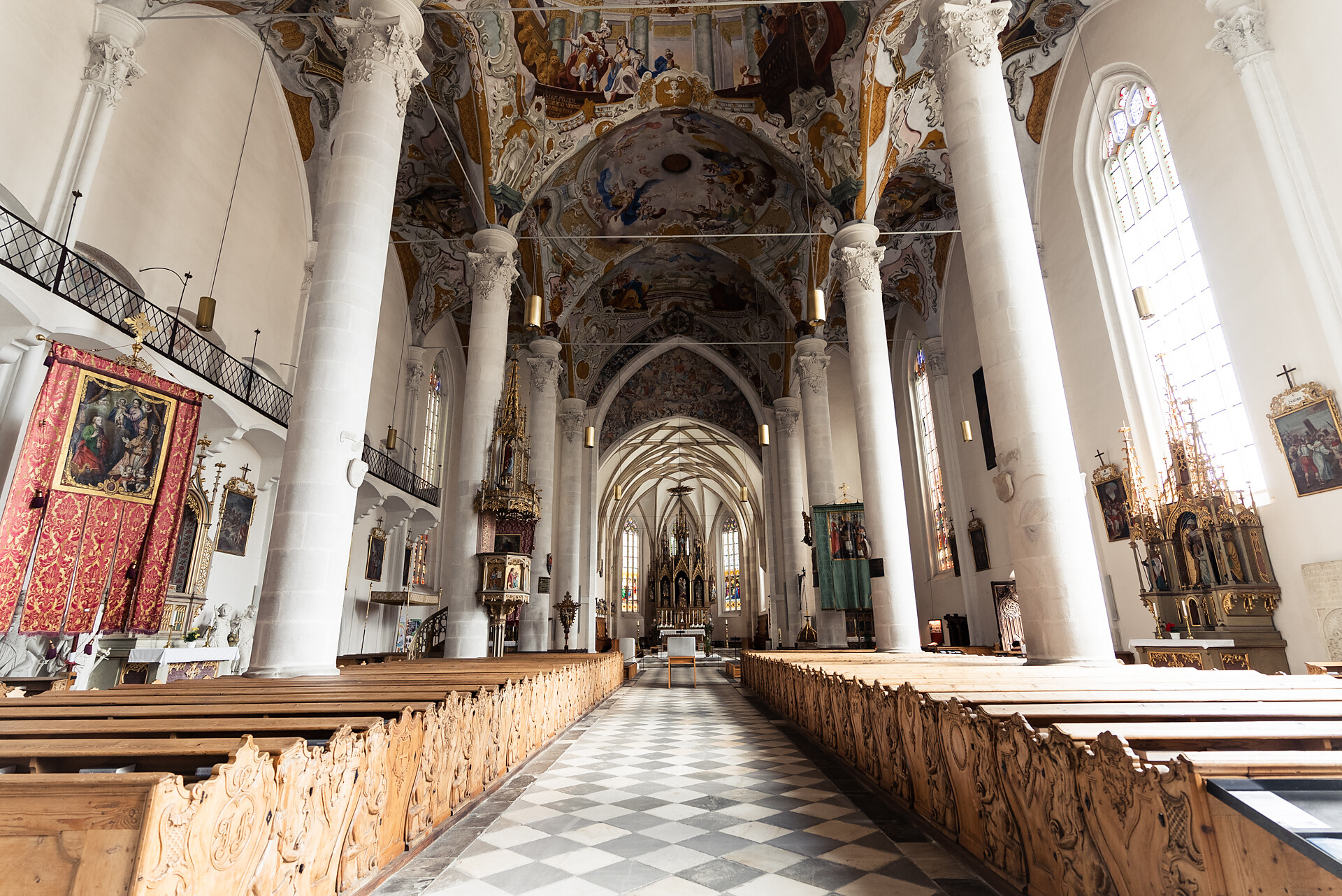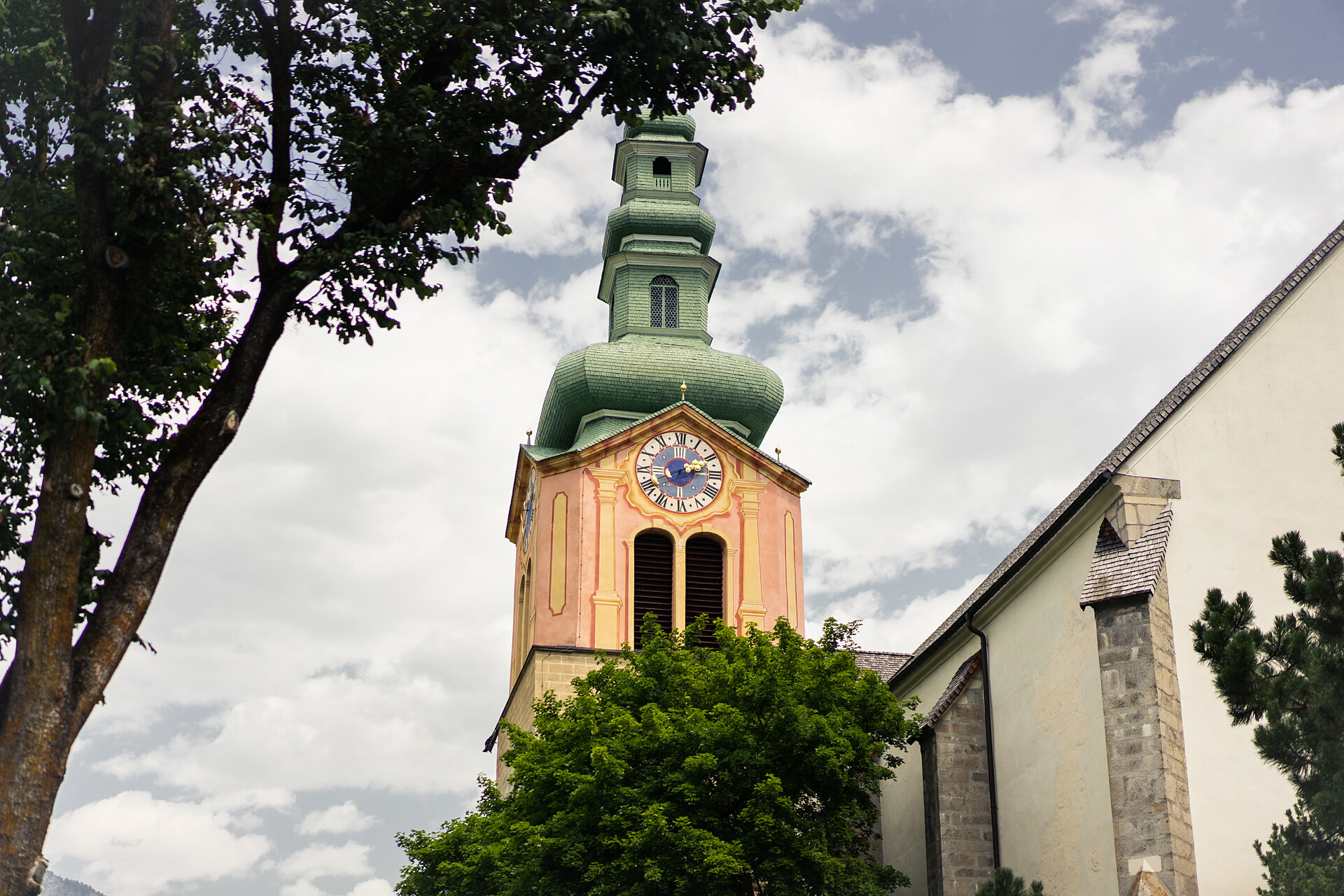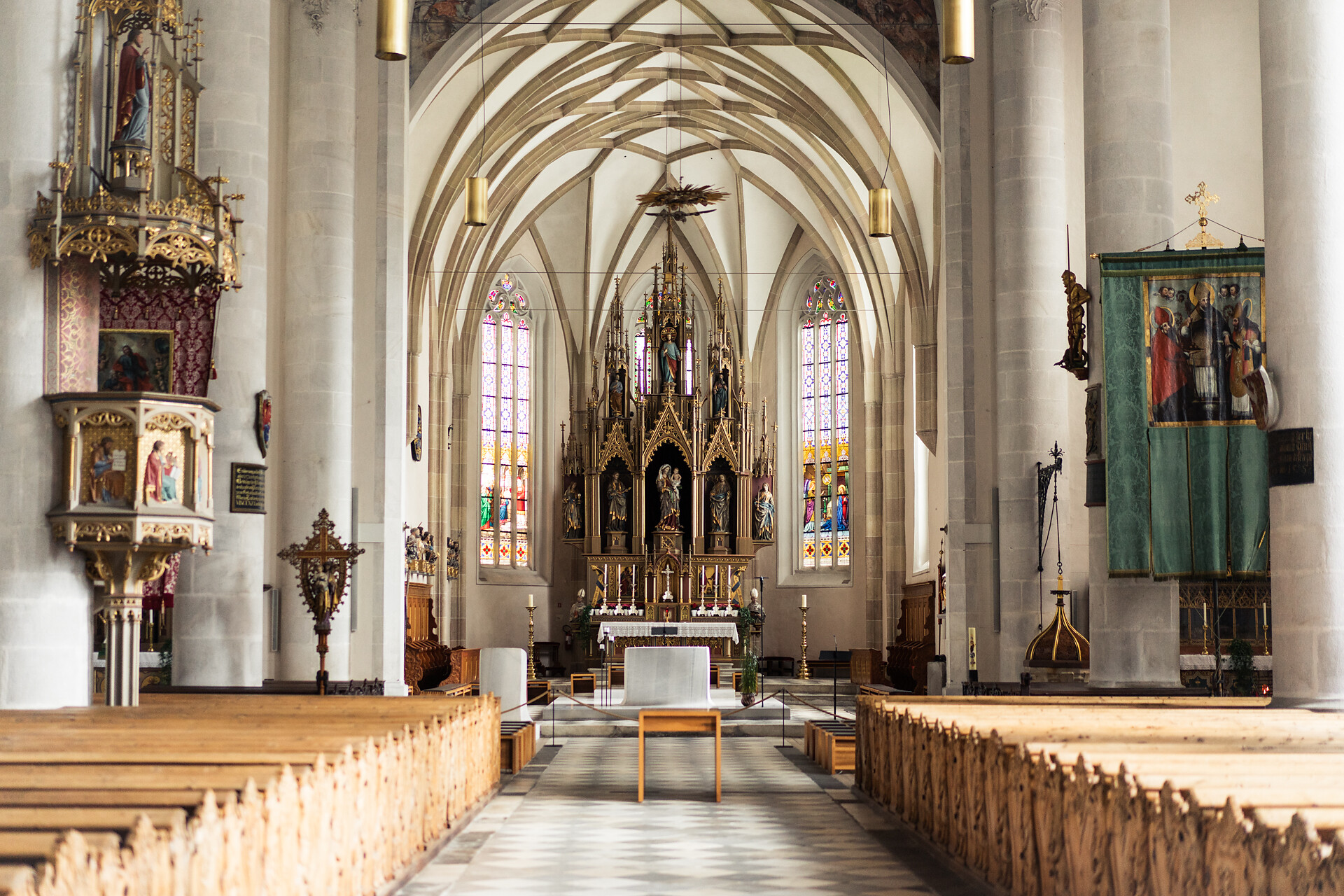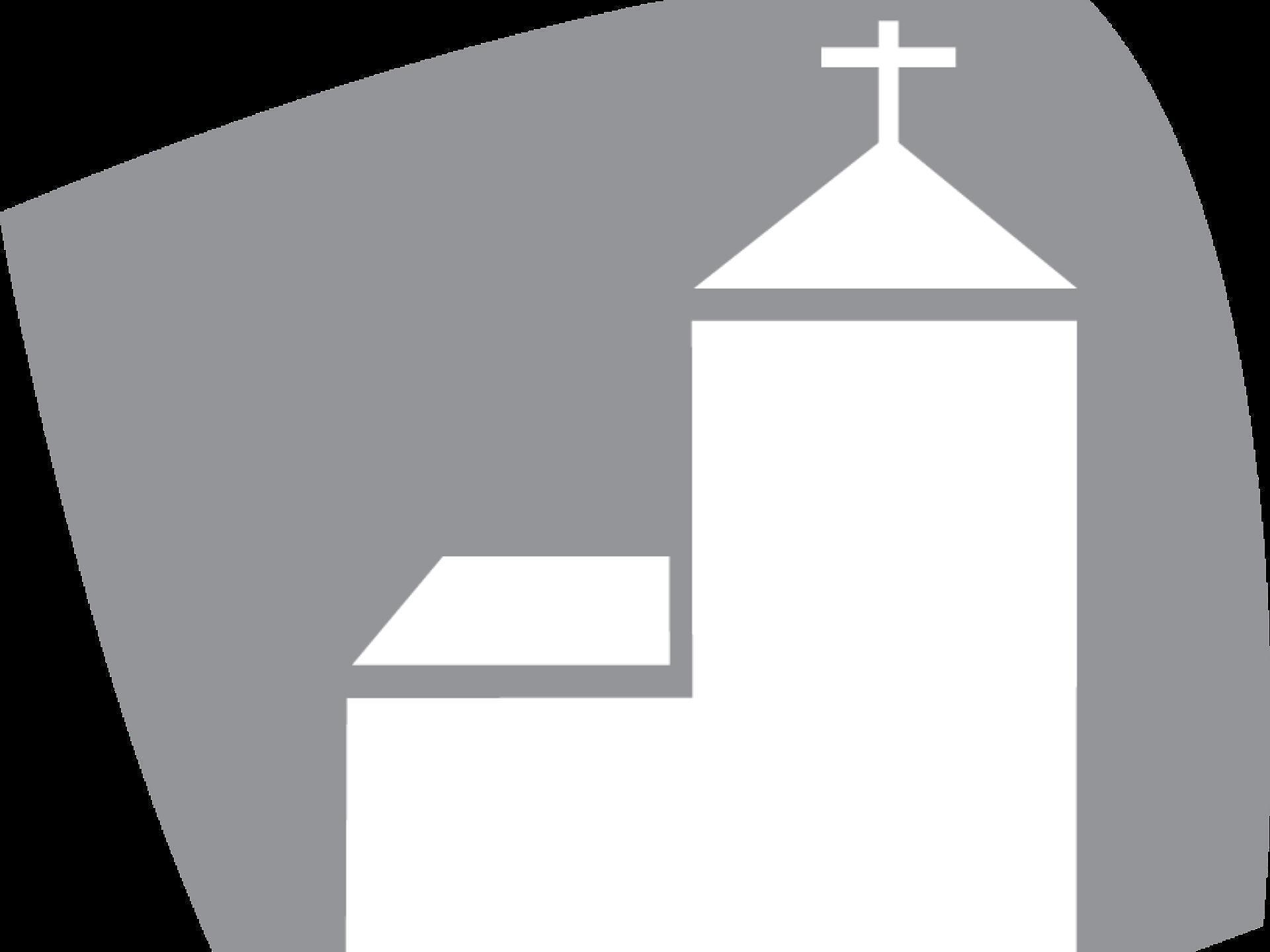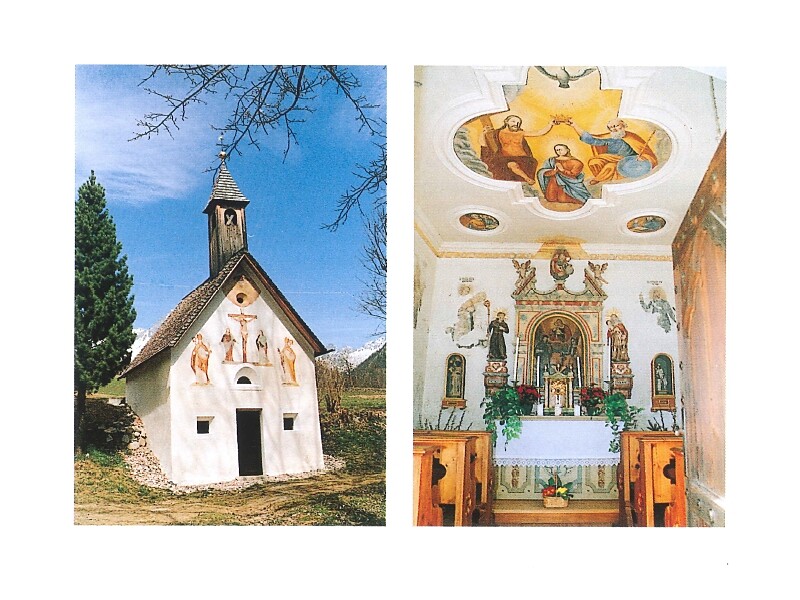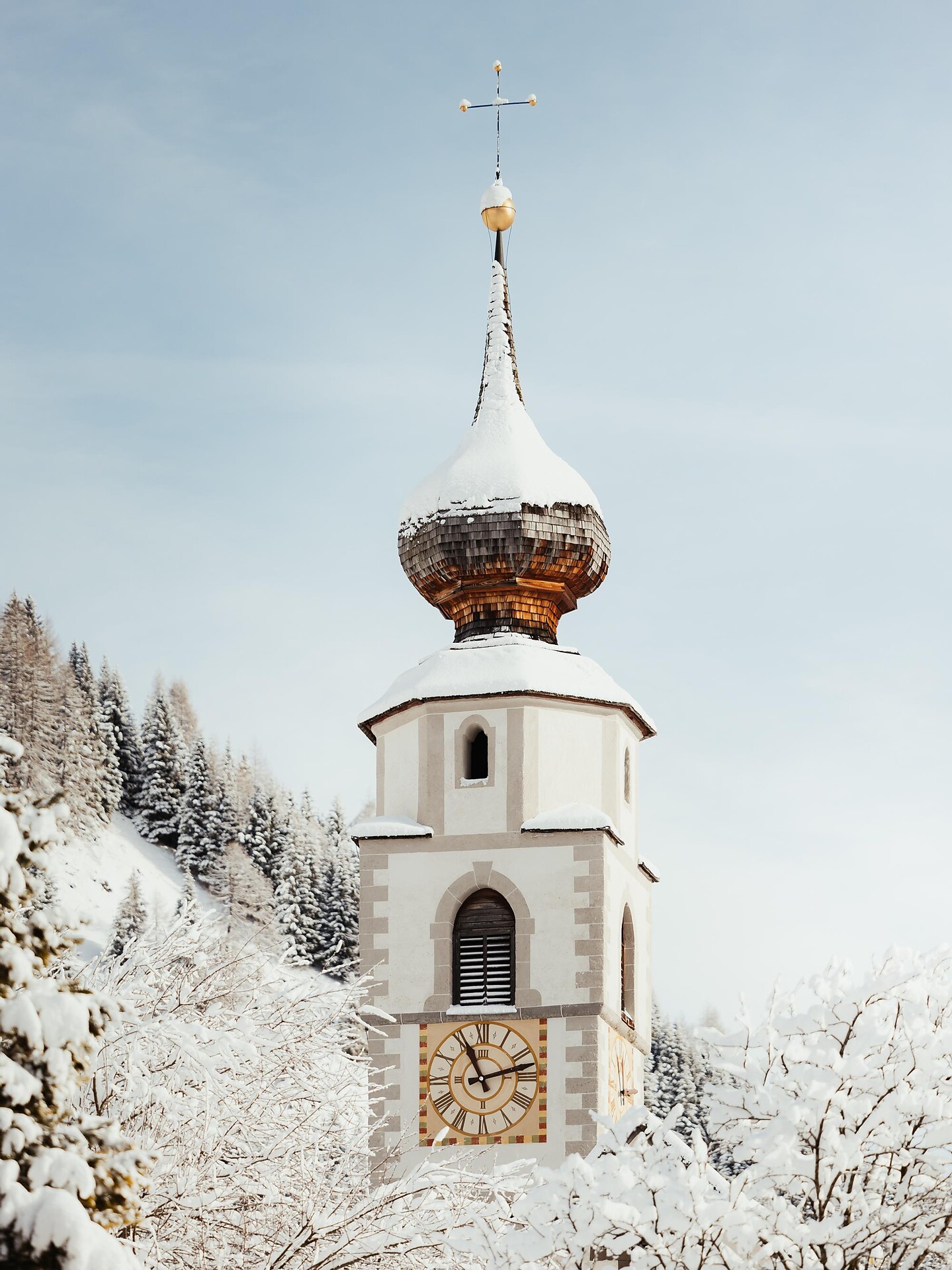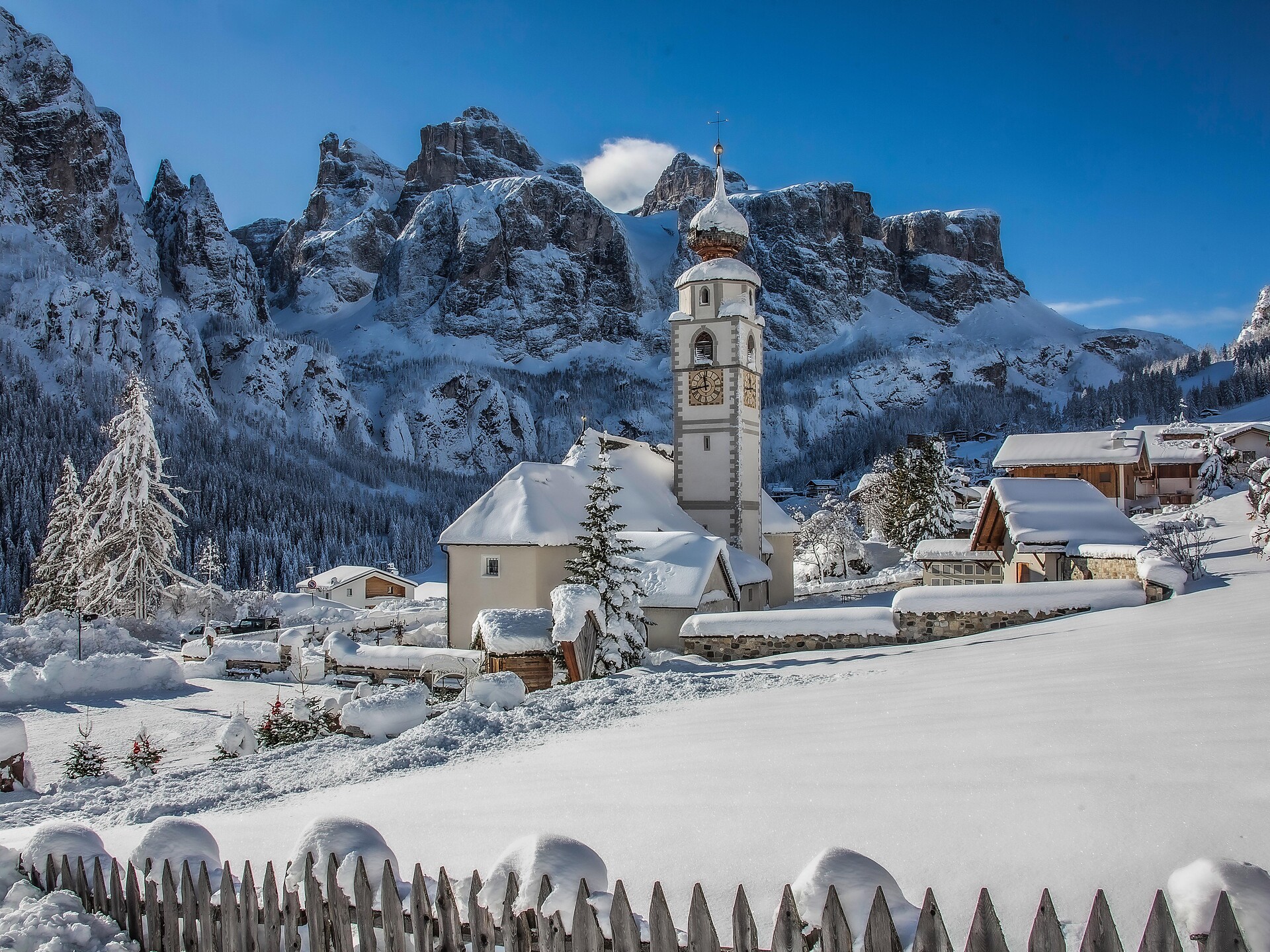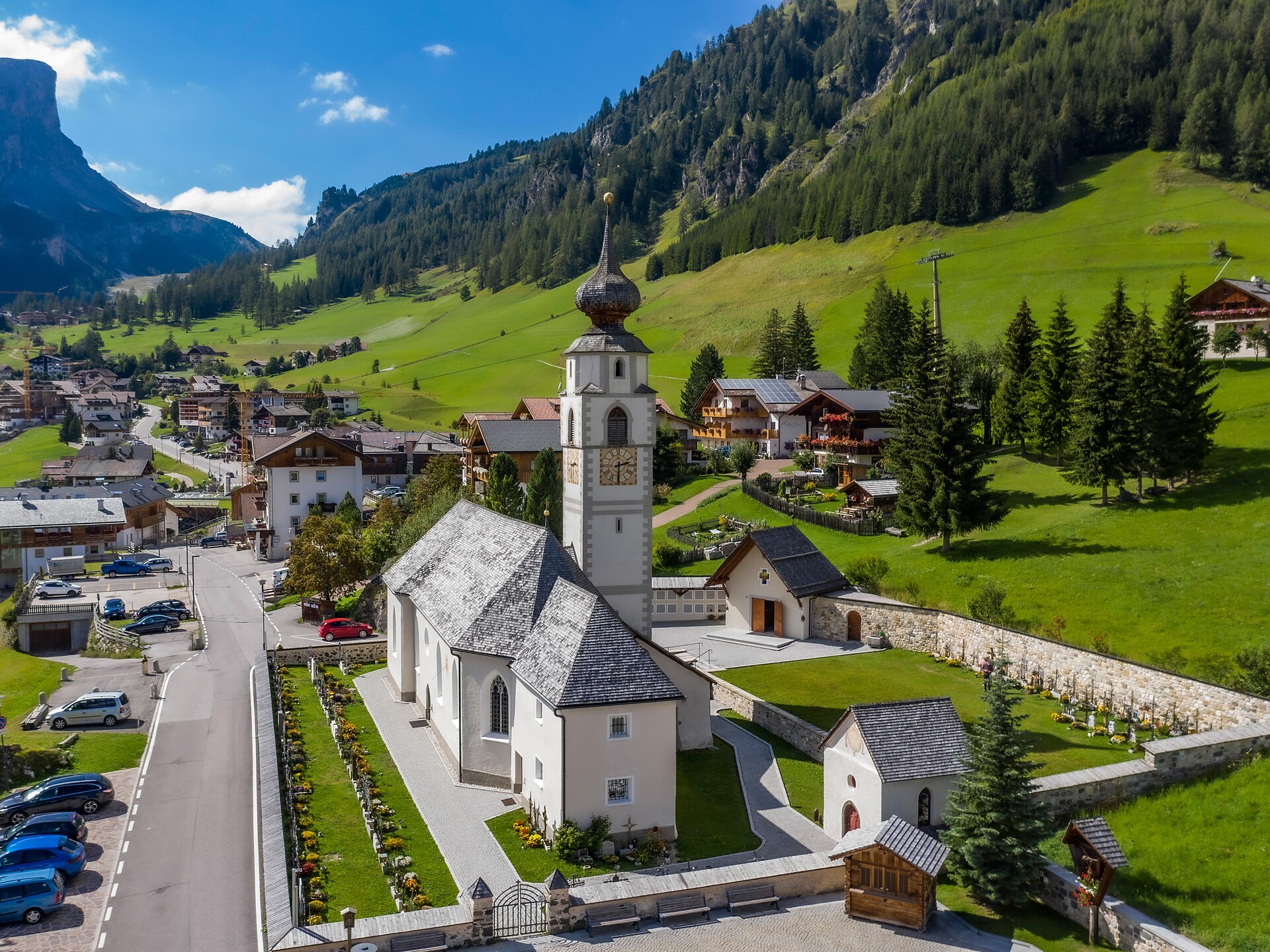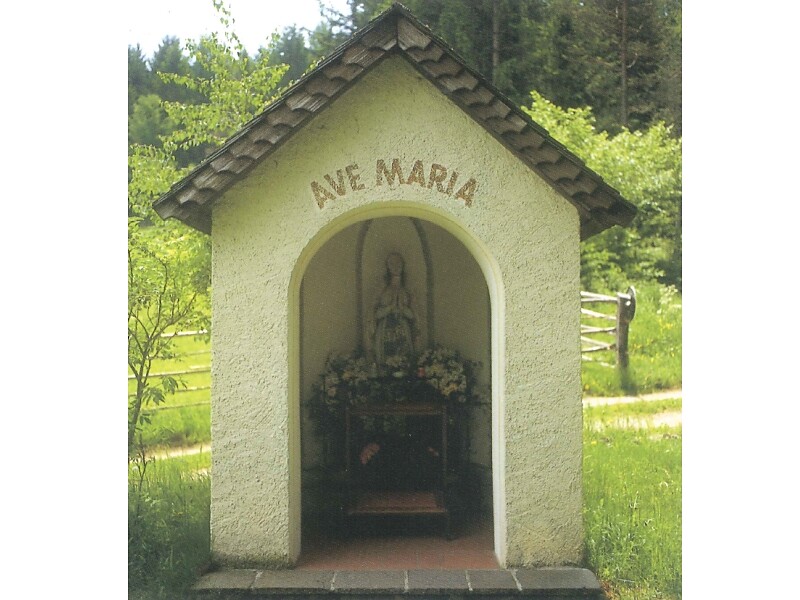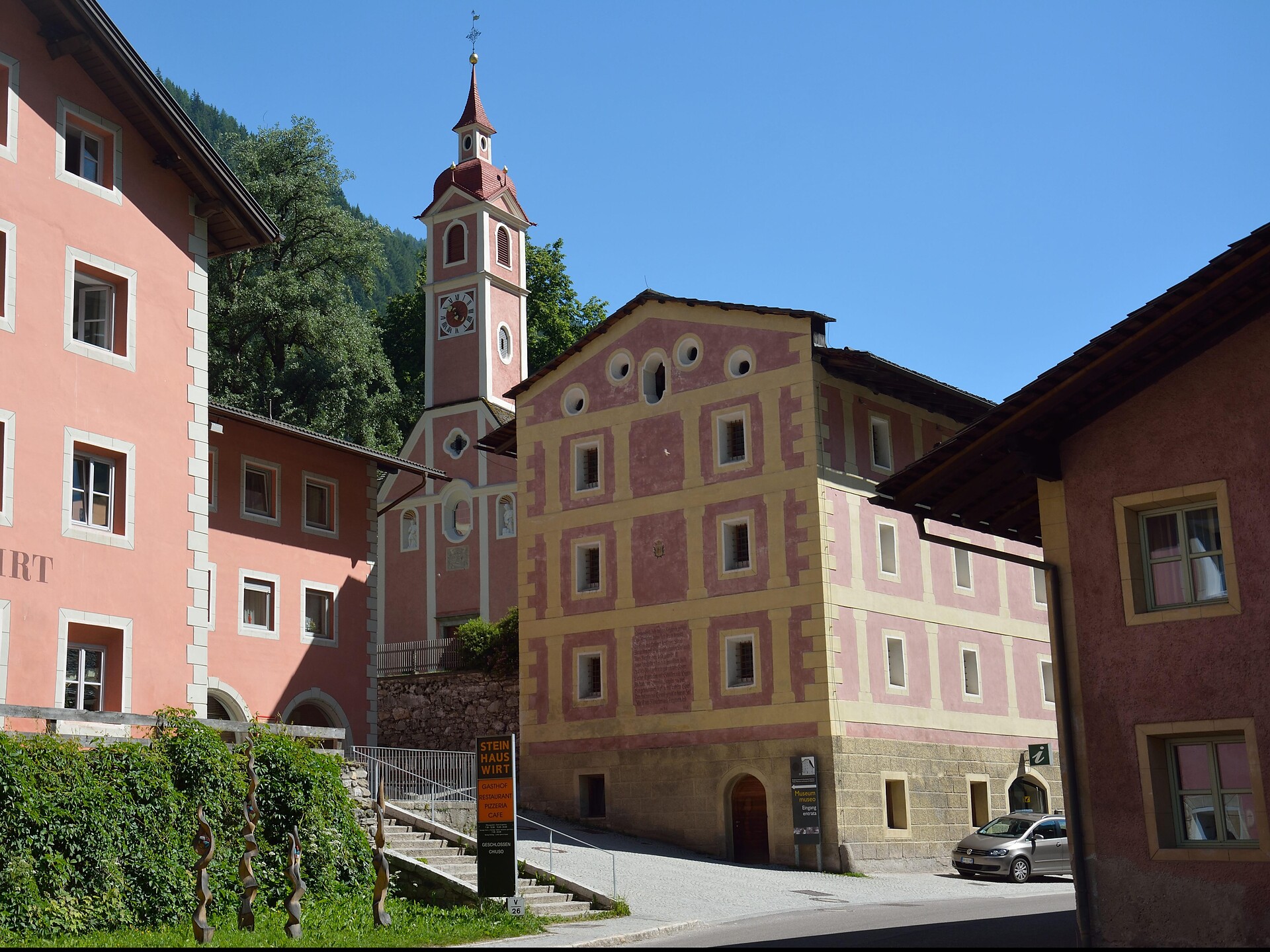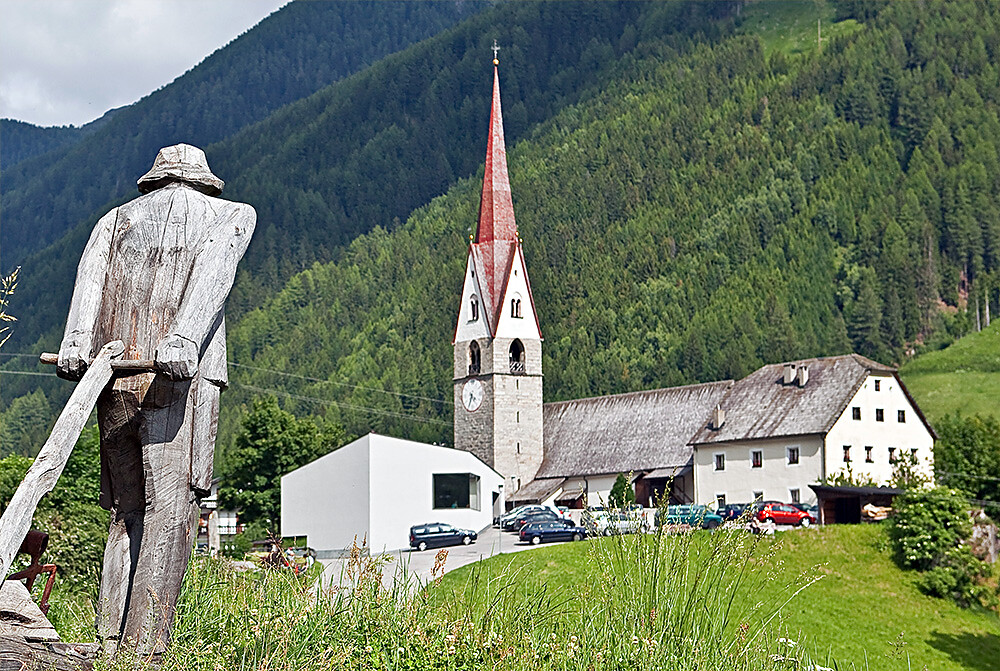Es gibt keinen Ort in Südtirol, in dem keine Kirche steht: Christlich geprägt, gibt es hierzulande eine große Dichte an Kirchen und Kapellen, Klöstern und Abteien, die ältesten davon bereits aus der frühchristlichen Zeit. Entlang viel frequentierter Wege, die bereits im frühen Mittelalter als Verbindung zwischen Nord und Süd dienten, entstanden Kapellen als Schutz für Reisende, Hospize und Kommenden für Ritterorden. Dazu kamen Klöster auf dem Land und in Städten, größere Kirchen und Kathedralen. Heute sind weit über 250 Kirchen erhalten und zugänglich. Besuchen Sie diese in kultureller, künstlerischer und kunsthistorischer Hinsicht interessanten Bauwerke, die Zeugen einer wechselvollen Geschichte sind.
The old parish church and the village of Graun were sacrificed for the sea stagnation in 1950. The new village was rebuilt in the fields of Margrond, and the church was much smaller in size than the new houses in Graun, planned by architect Erich Pattis from Bolzano.
The church is a simple hall construction with a wooden ceiling. In the back of the church, in the simple sanctuary, is the organ, in the foreground the apse with the image of Catherine of Alexandria on the side to which this church is also dedicated. The main picture, however, shows the Assumption of Mary into heaven, since in the year of the consecration of the Church, the Pope had proclaimed a Marian year.
The present parish church of Graun (foundation stone laying May 29, 1950, completion on 02.12.1951, consecration on May 18, 1954 by Bishop Josef Gargitter) was built together with the new village, but is much smaller than the old parish church.
